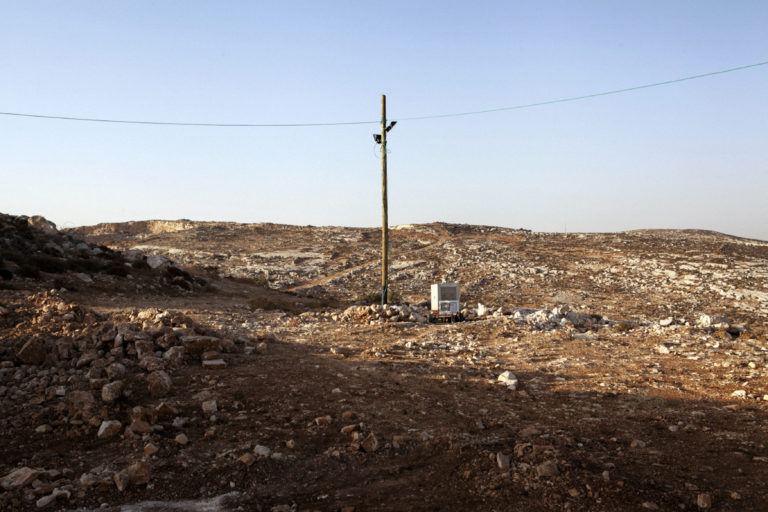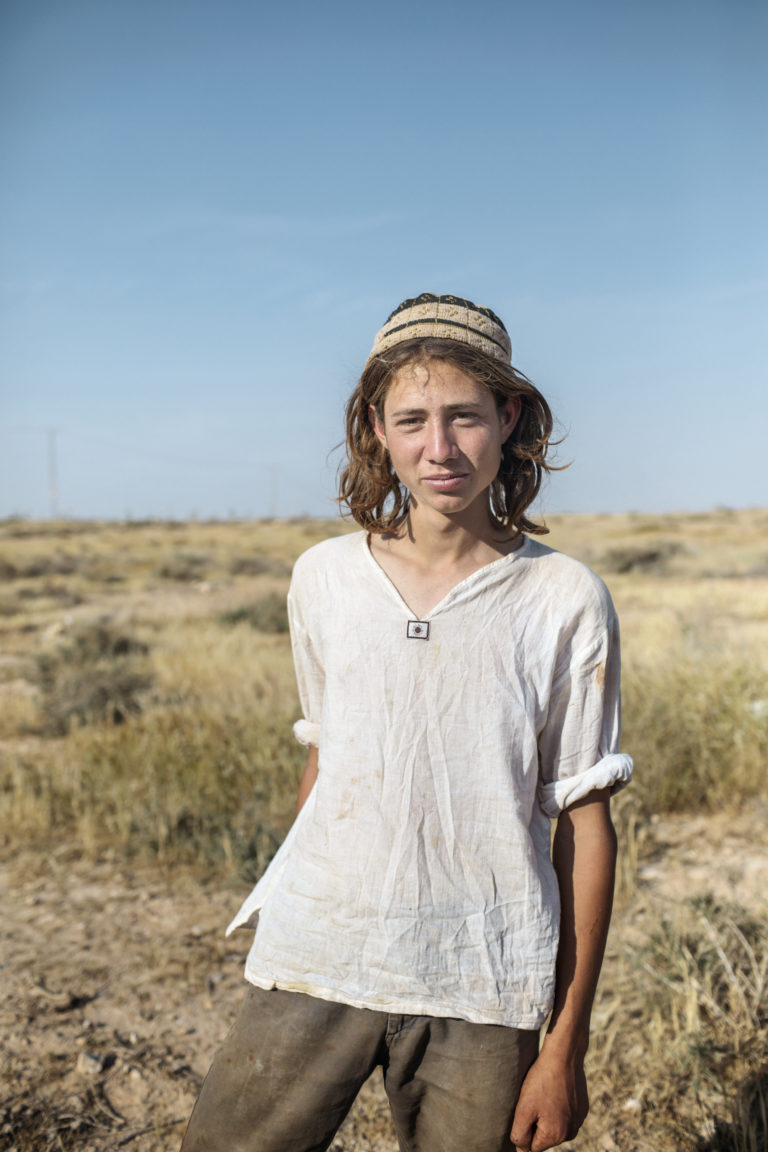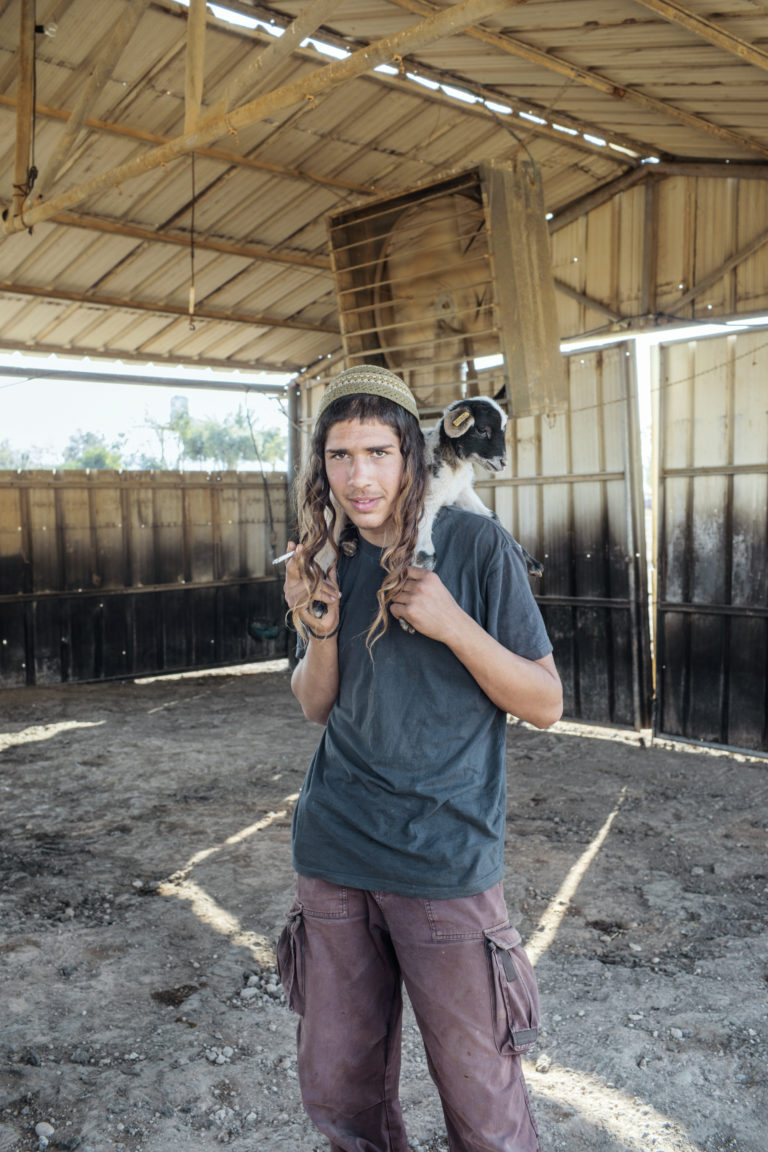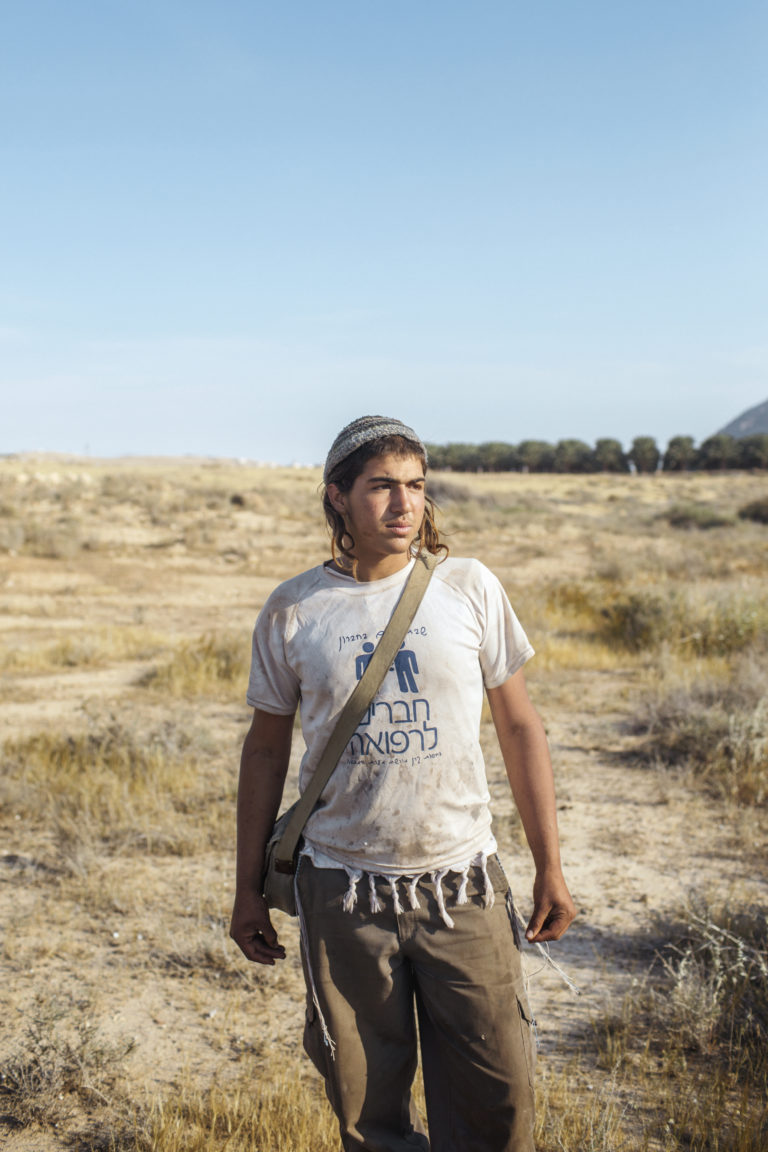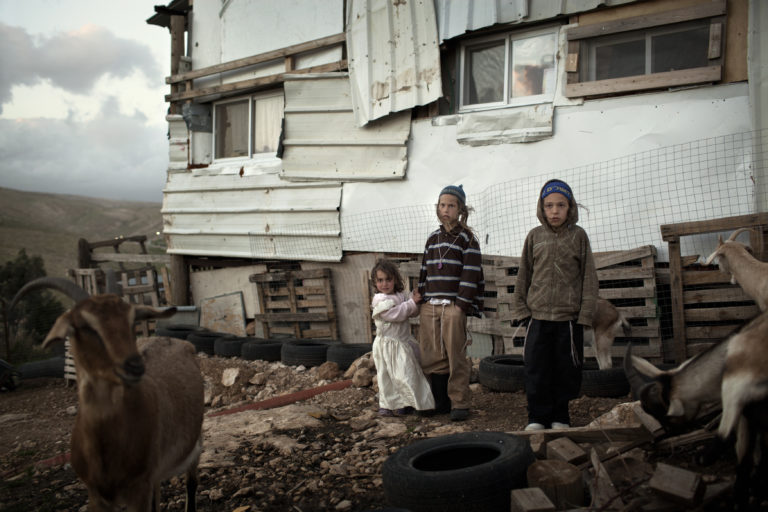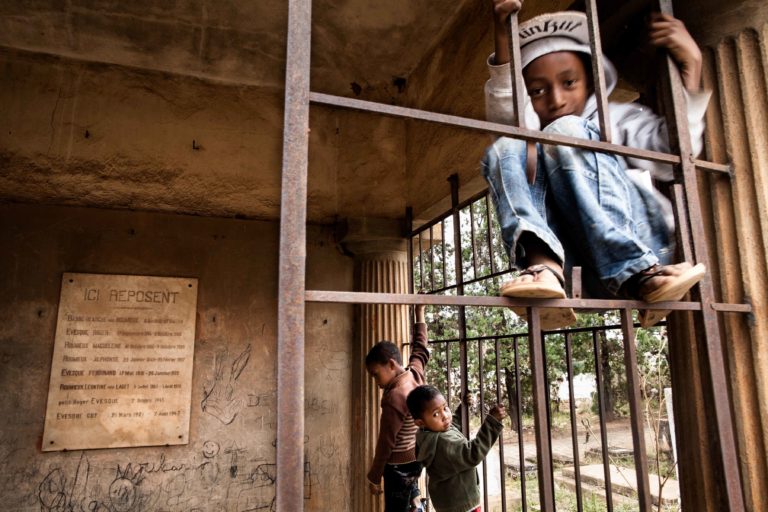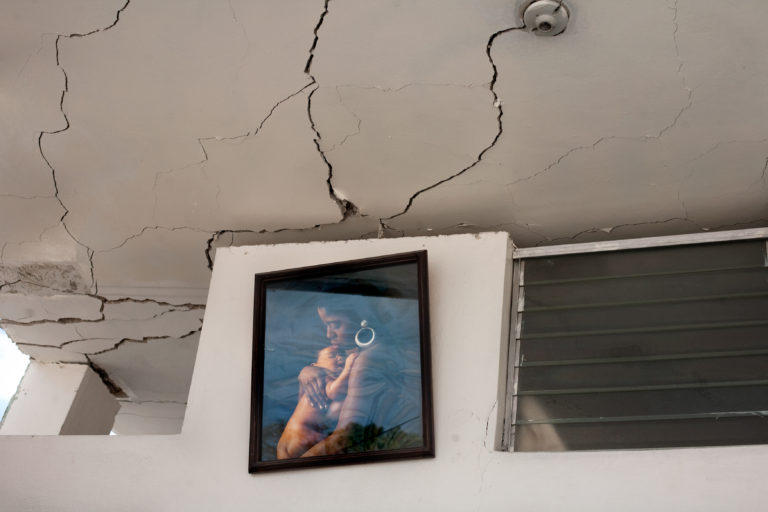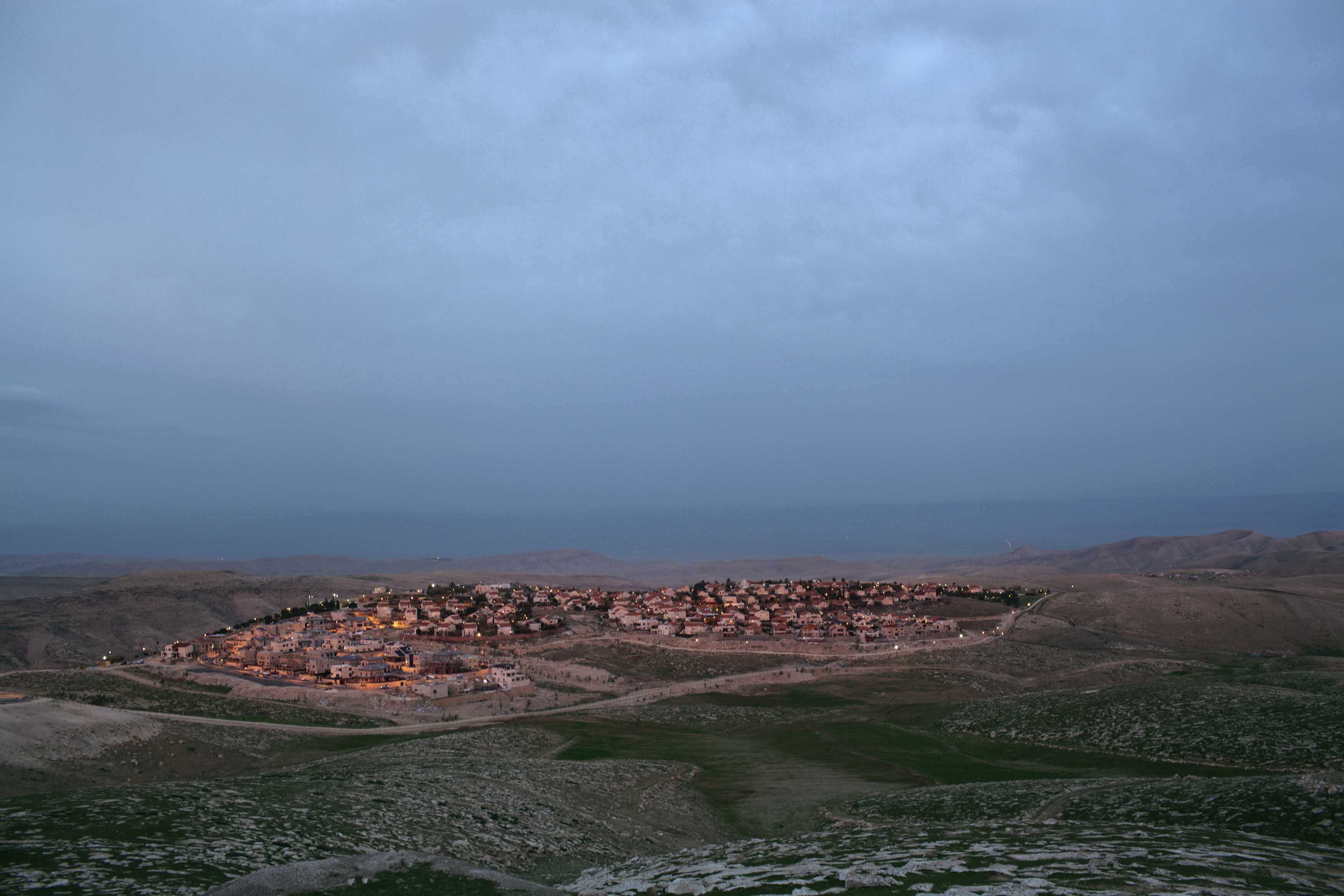
Israeli settlement of Kedar, West Bank, 2013. View of the Settlement of Kedar. About half a million Israelis are now living in the Occupied Palestinian Territories, across 133 colonies (including those in East Jerusalem) and more than 100 outposts, which combined control 42% of the whole area of the West Bank. Kedar is part of the construction plan E1, with which the Israeli government aims to expand the boundaries of the municipality of Jerusalem, effectively splitting the West Bank in two.
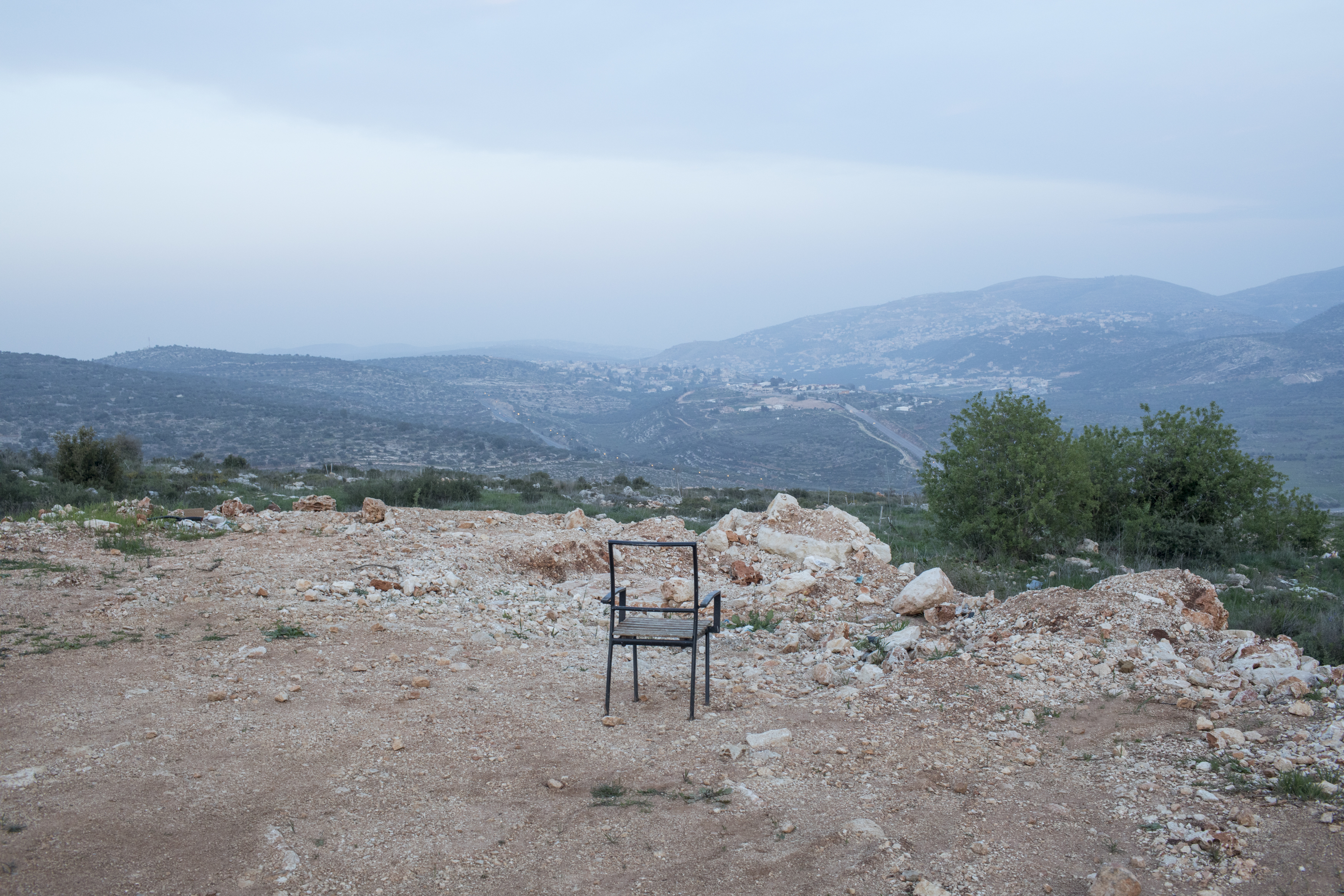
Israeli outpost of Nofei Nehemia, West Bank, 2017. A chair used by the soldiers guarding the settlement.
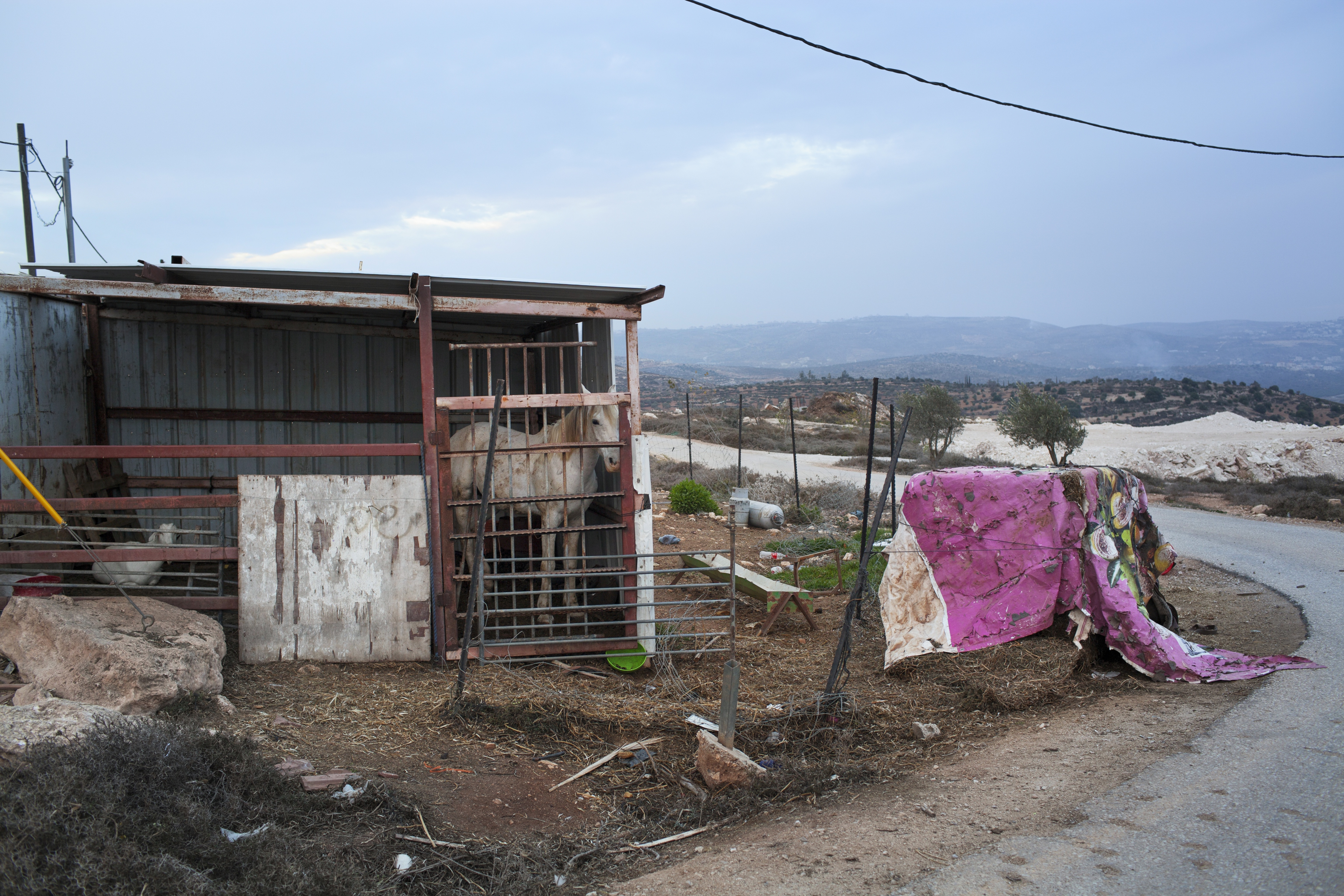
Israeli outpost of Adei Ad, West Bank, 2013.
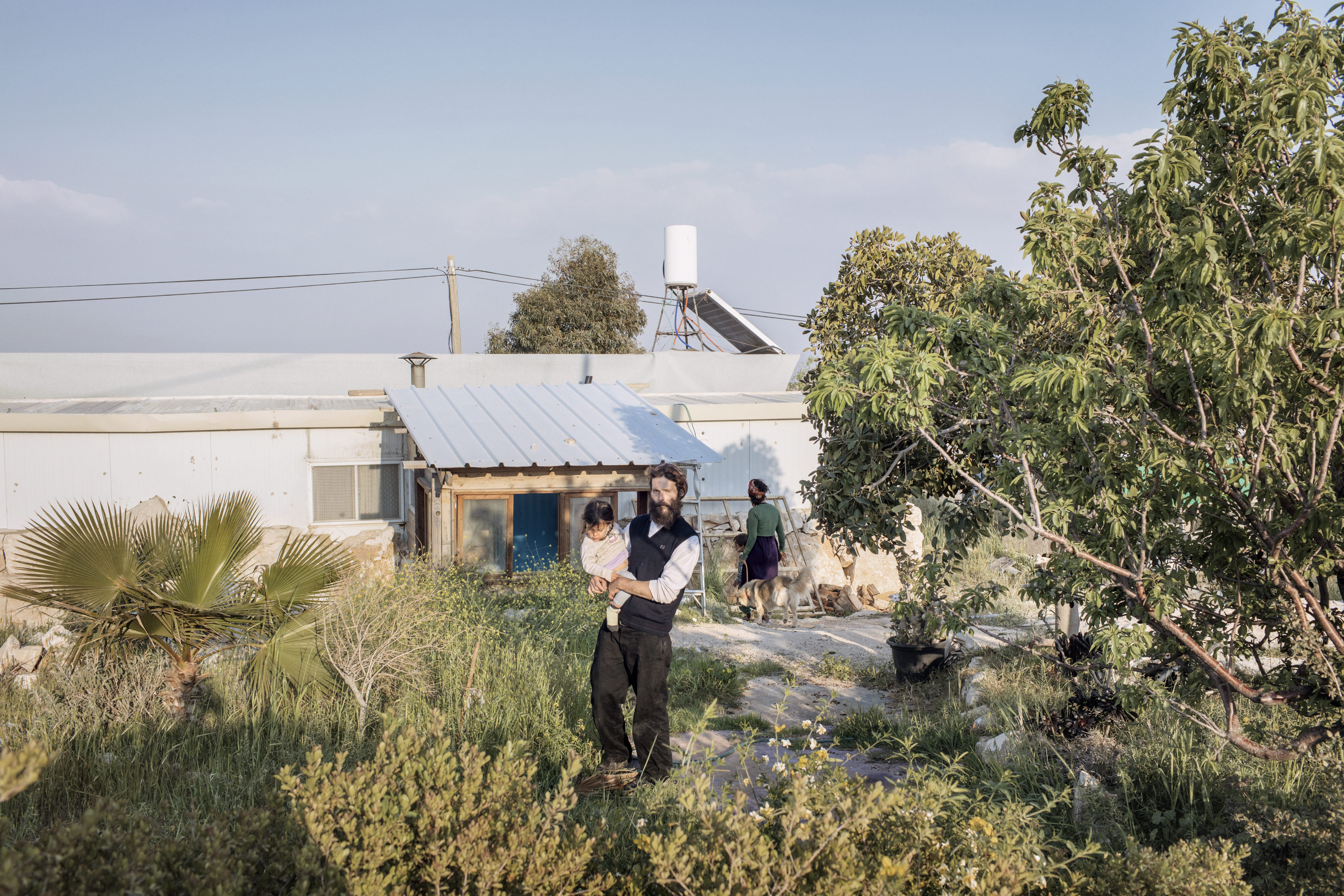
An Israleli Jewish family of settlers outside their prefabricated house located in an outpost inside the Israeli settlement of Tekoa, in the West Bank. 24/03/2017. The outpost is inhabited by a dozen young religious families who want to live an easy life in contact with the nature.
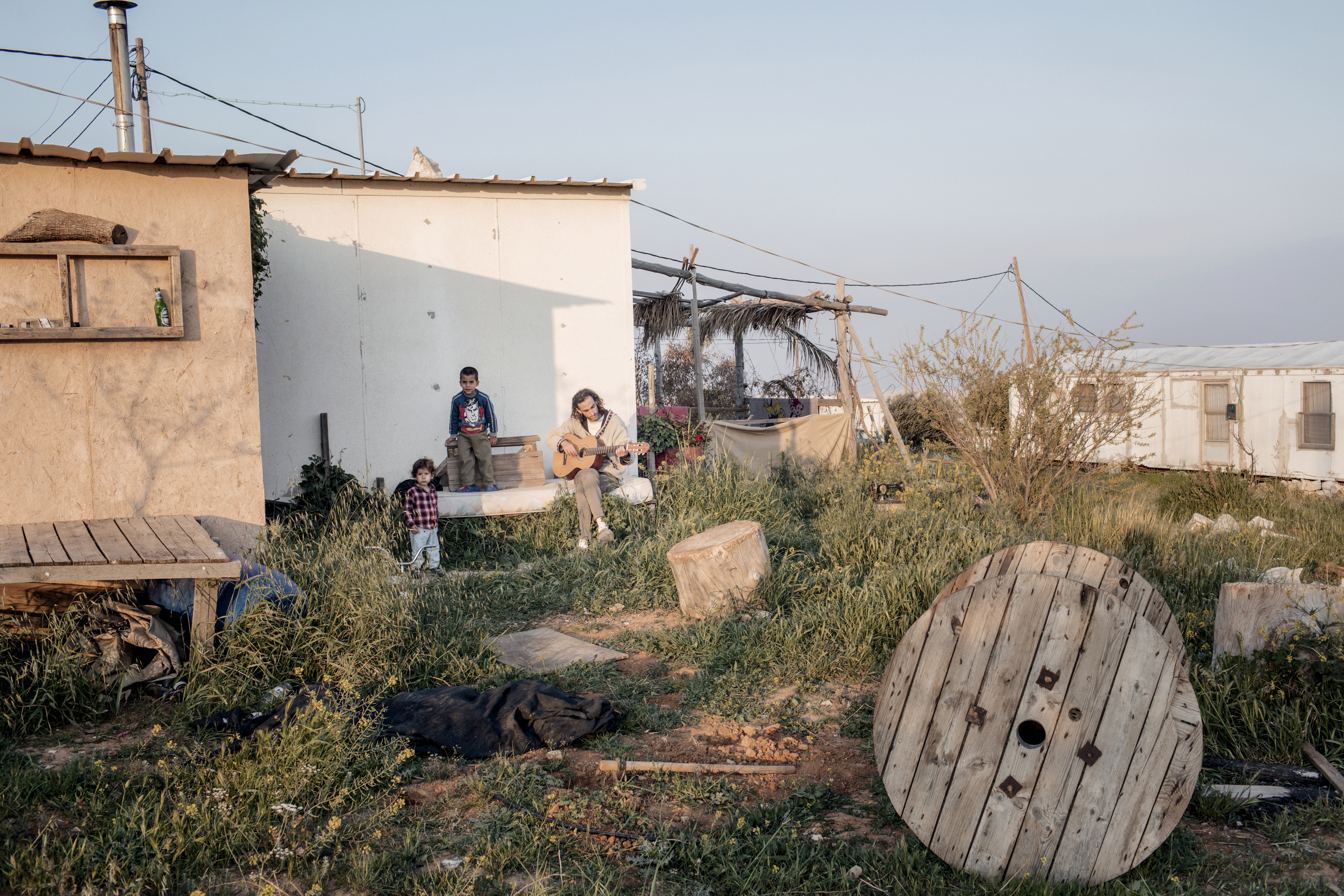
Israeli out post of Tekoa D, West Bank, 2017. Residents of Tekoa D, an Israeli outpost inhabited by a dozen young families.
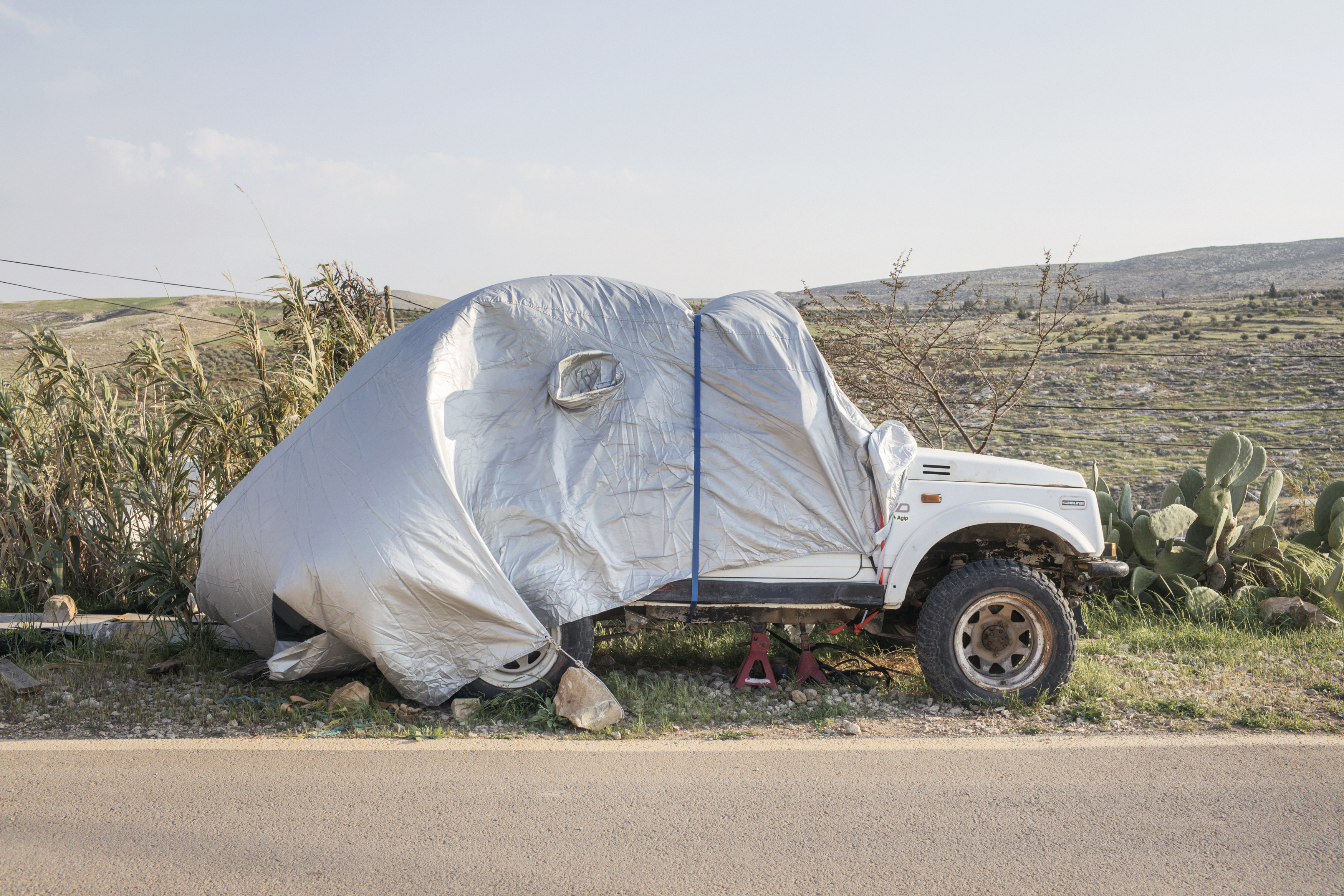
Israeli outpost of Tekoa D, West Bank, 2017.
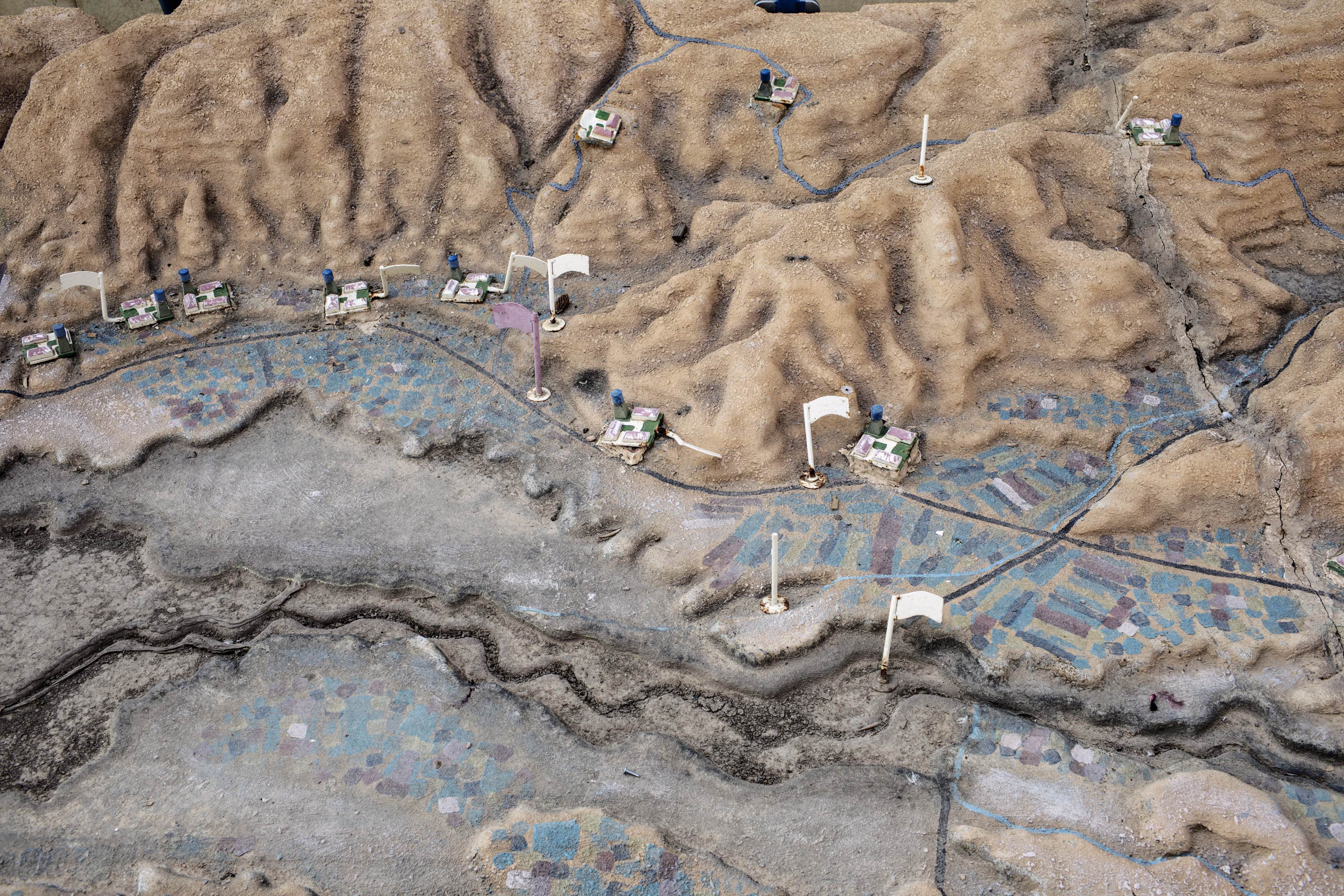
Jordan Valley, West Bank, 2017. Detail of a model showing the Israeli settlements in the Jordan Valley. The model is located in a rest area along the Road 90, in the Jordan Valley.
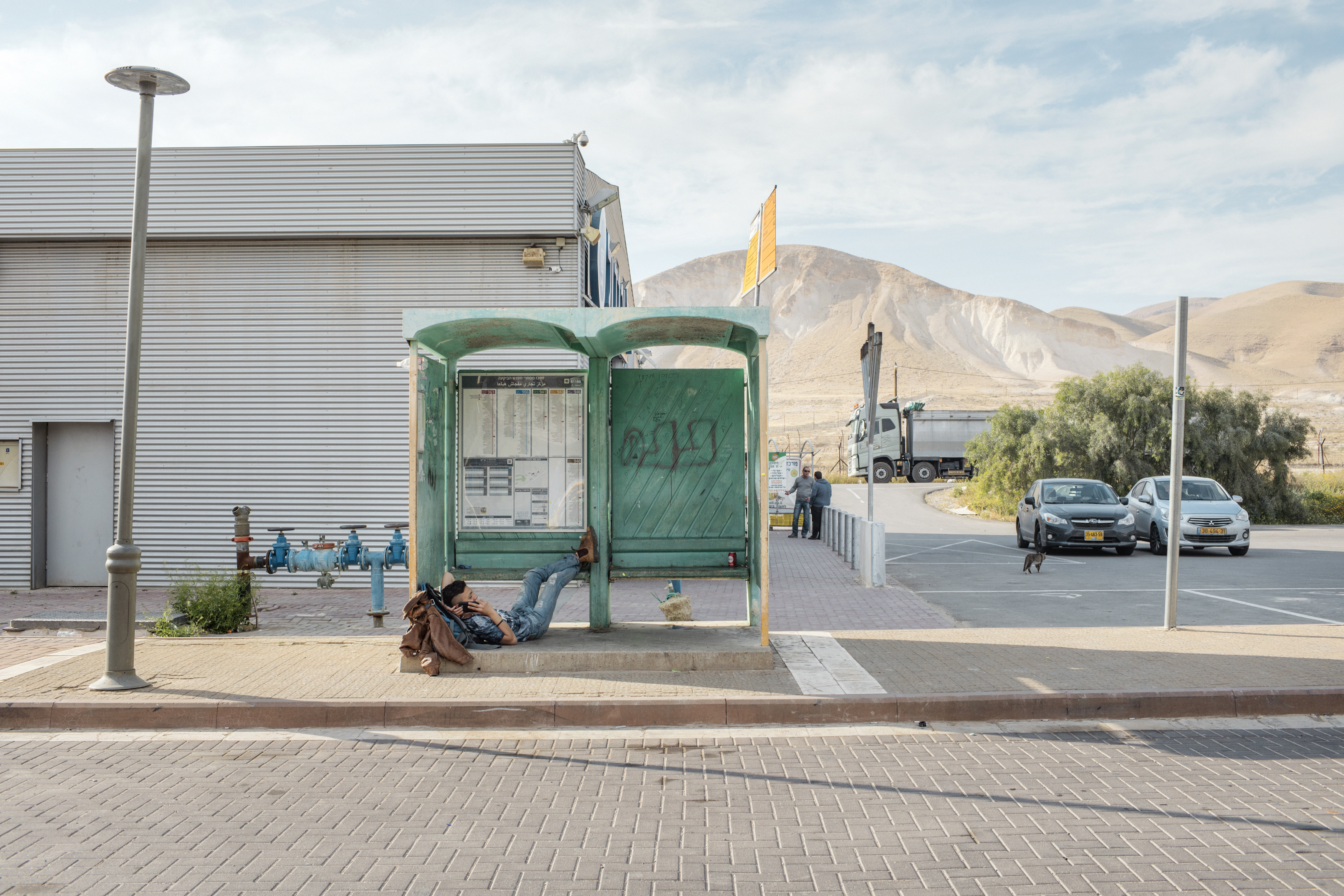
A young Israeli settler at a bus stop in a rest area located on the Road 90, in the Jordan Valley, West Bank.
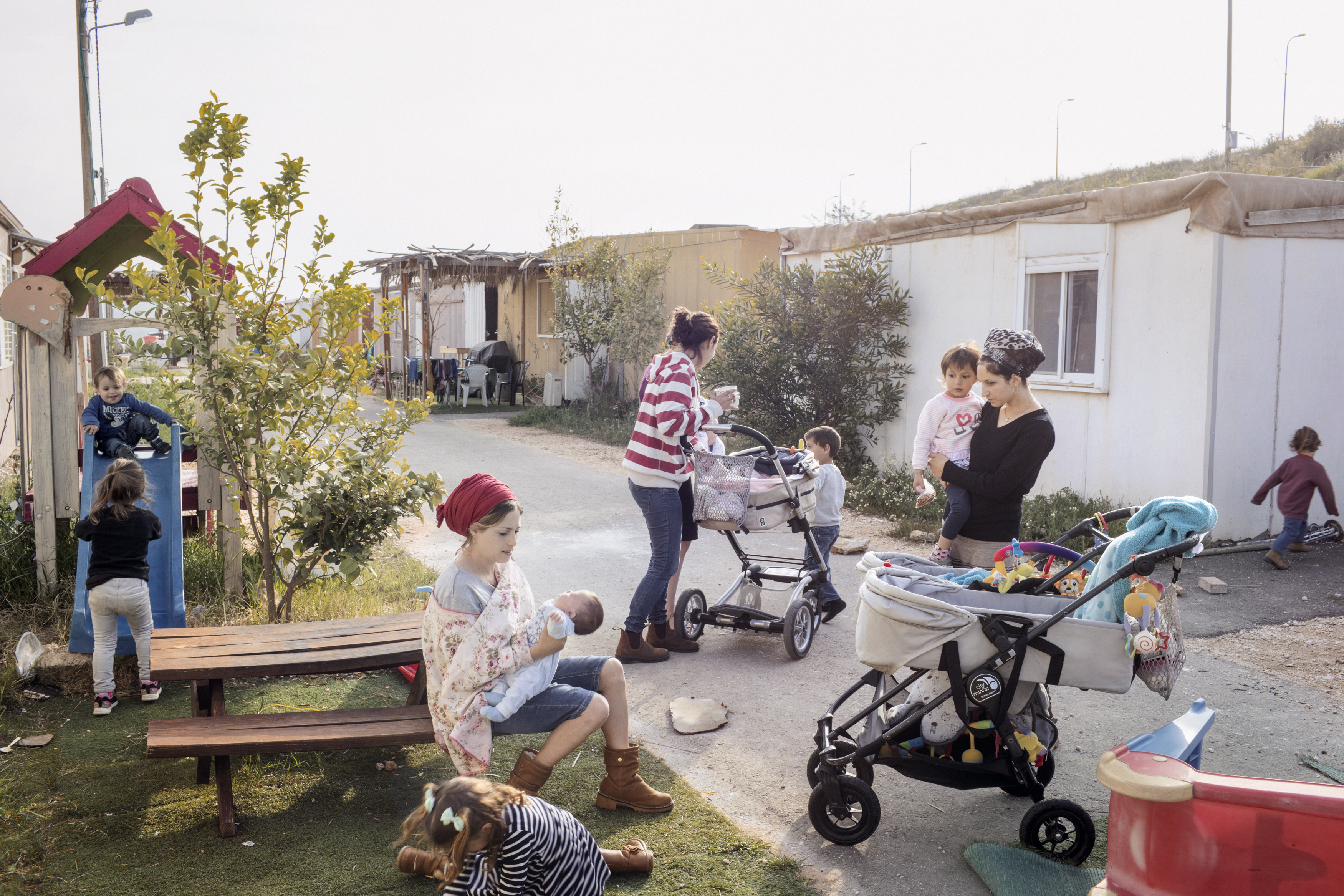
Israeli outpost of Nofei Nehemia, West Bank, 2017. Residents of Nofei Nehemia, an Israeli ouptpost established in 2002.
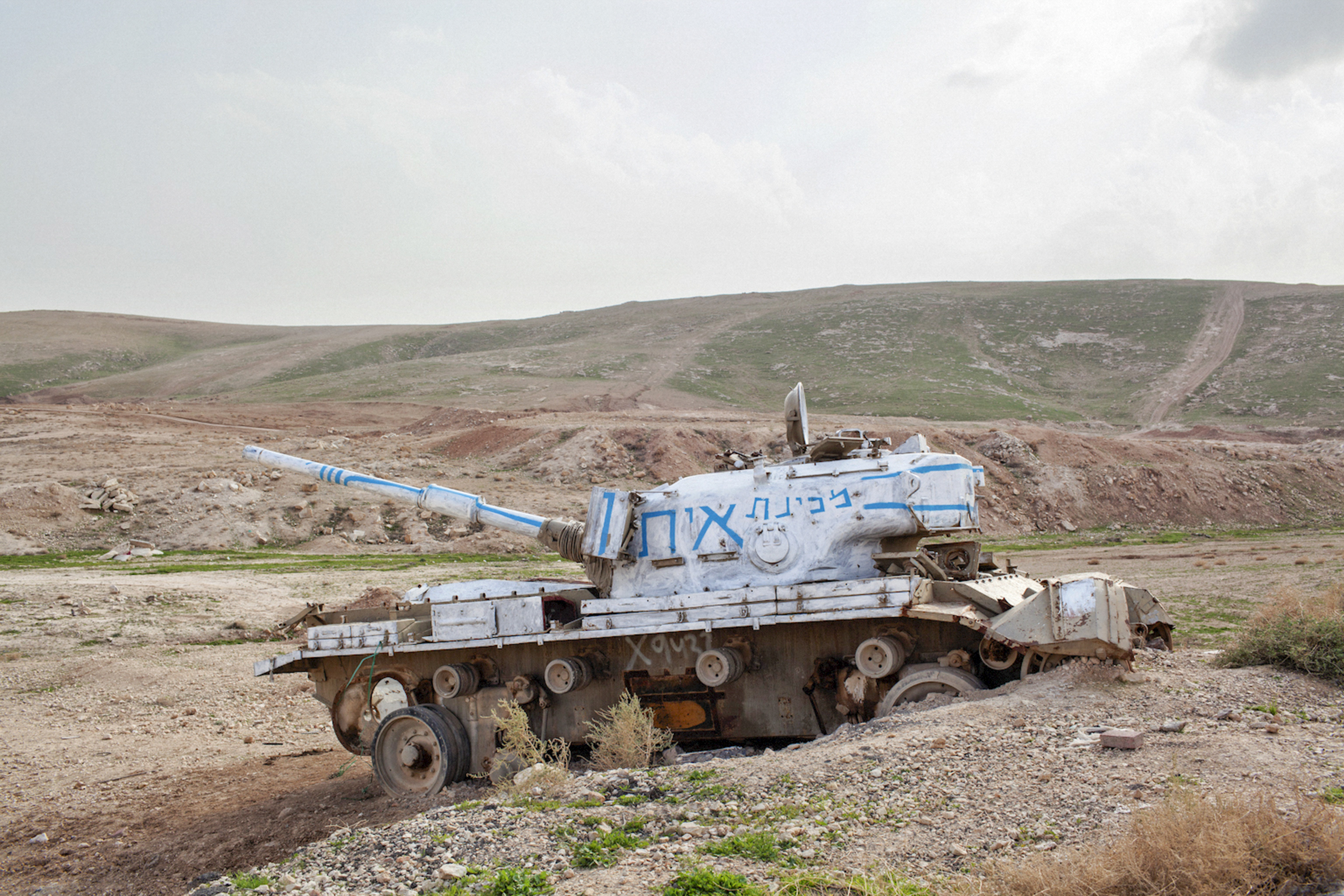
Israeli settlement of Ma'ale Adumim, West Bank, 2013. An old Israeli tank is seen at the entrance of the settlement.
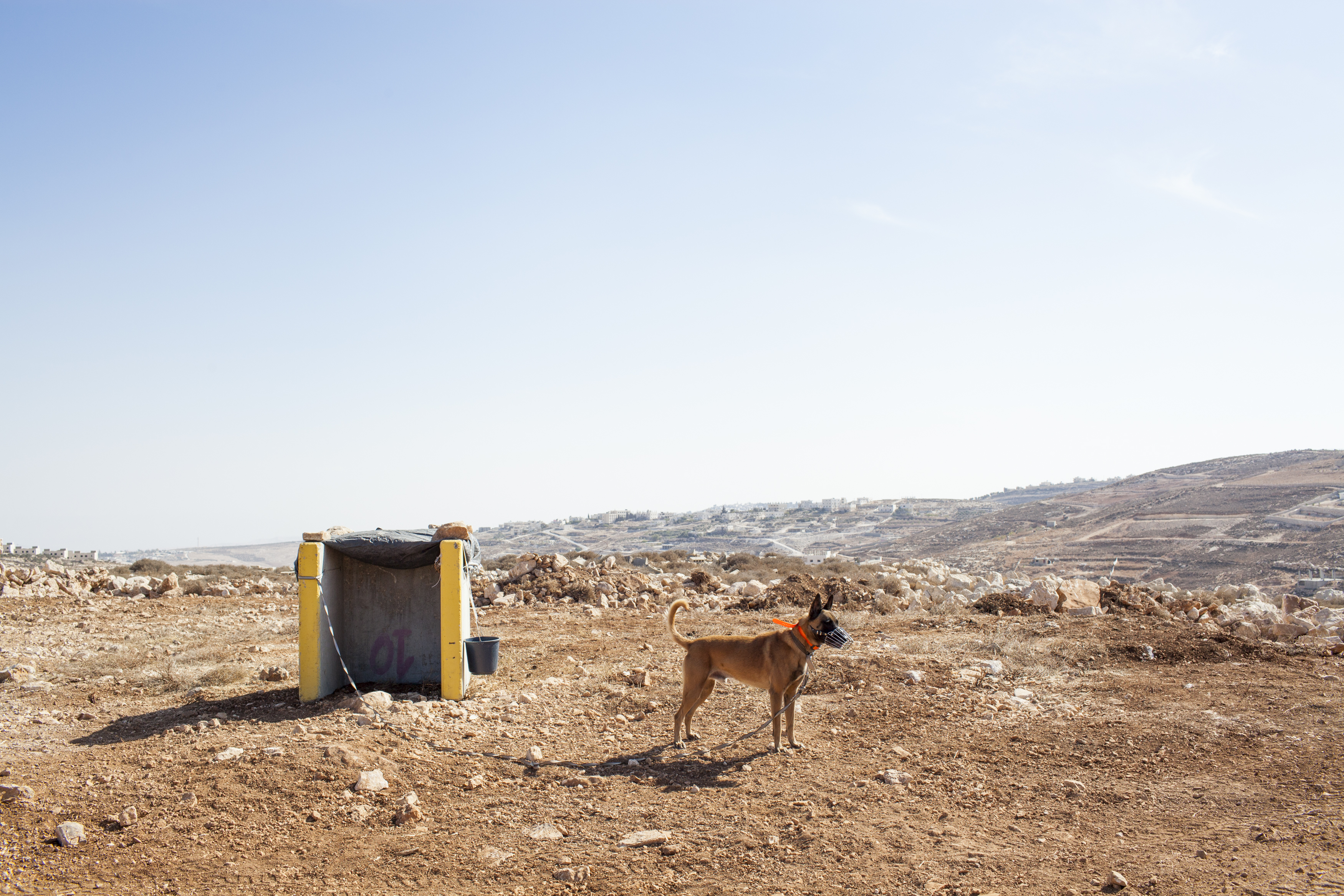
Israeli outpost of Giv’at Eitam, West Bank, 2013. A guard gog in the new outpost which has been established on a hill close to the settlement of Efrata (South of Bethlehem). Settlers who took this plot of land declare that the plan is limited to the establishment of an agricultural farm, but most probably, according to the experts, the outpost is part of the expansion plan of the Efrata settlement.
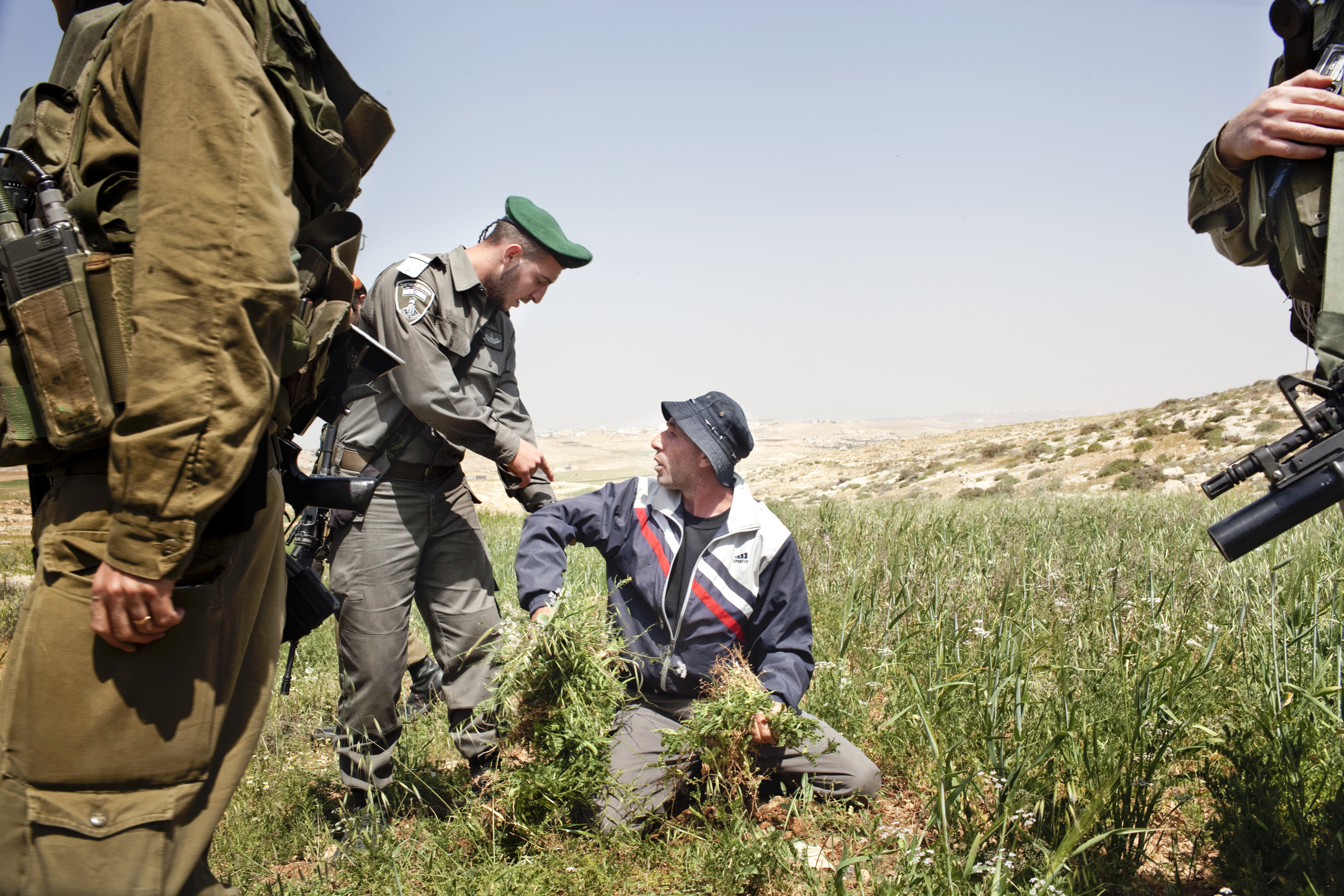
Hafez Hraini, a member of the Popular Committee of the South Hebron Hills, is arrested by border police officers and Israeli Army soldiers in the Palestinian village of At Tuwani, in the southern West Bank, 06/04/2013. The arrest occurs on his own land in the valley of Khelly, just a few meters from the Israeli settlement of Ma’on and the outpost of Havat Ma’on, where he was protesting. The purpose of the action (the harvest of his field) was to reaffirm the right of Palestinians to access their land despite the restrictions imposed by the Israeli Military Administration.
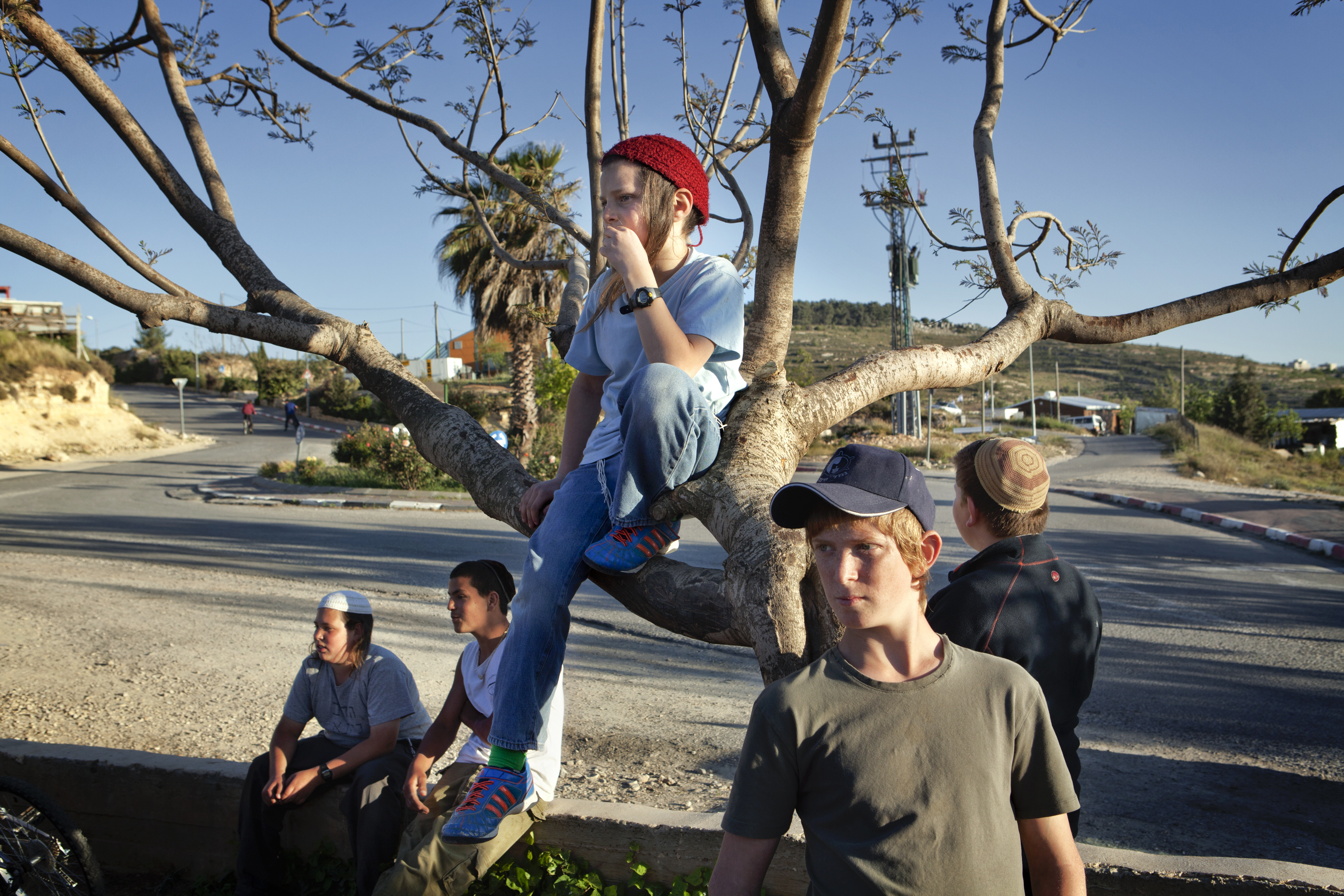
Settlement of Bat Ayin, West Bank, 2013. Young boys watching the preparations for the celebration of the State of Israel’s Independence Day. Bat Ayin is a settlement located between Bethlehem and Hebron which was founded in 1989 by religious Zionists. The majority of its residents are practising Jews who support the Zionist efforts to build a Jewish state in the land of Israel.
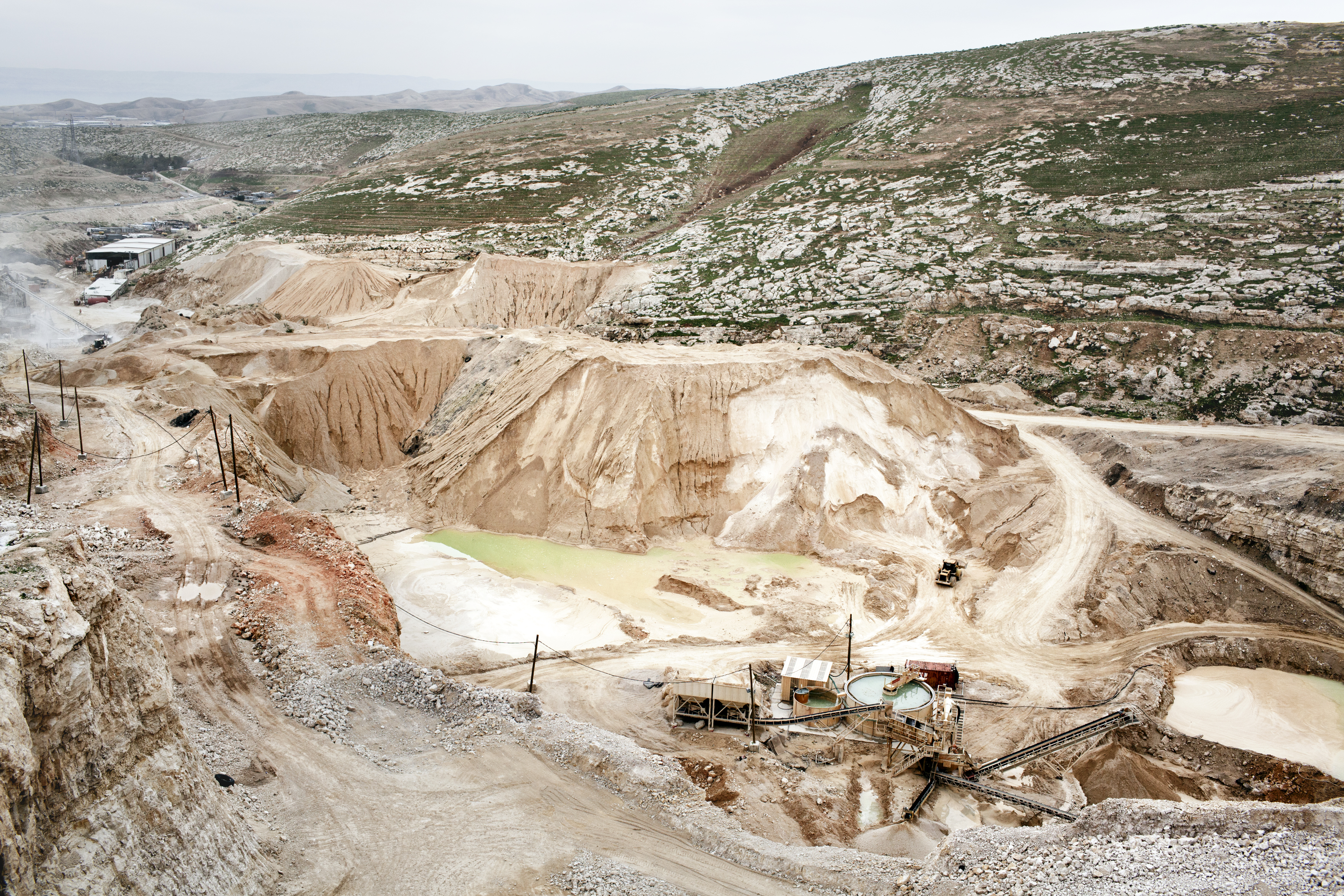
Route 437, West Bank, 2013. An Israeli company working on the extraction of sand for the production of cement. ### Strada 437, West Bank, 2013. Un’impresa israeliana per l’estrazione di sabbia destinata alla produzione di cemento.
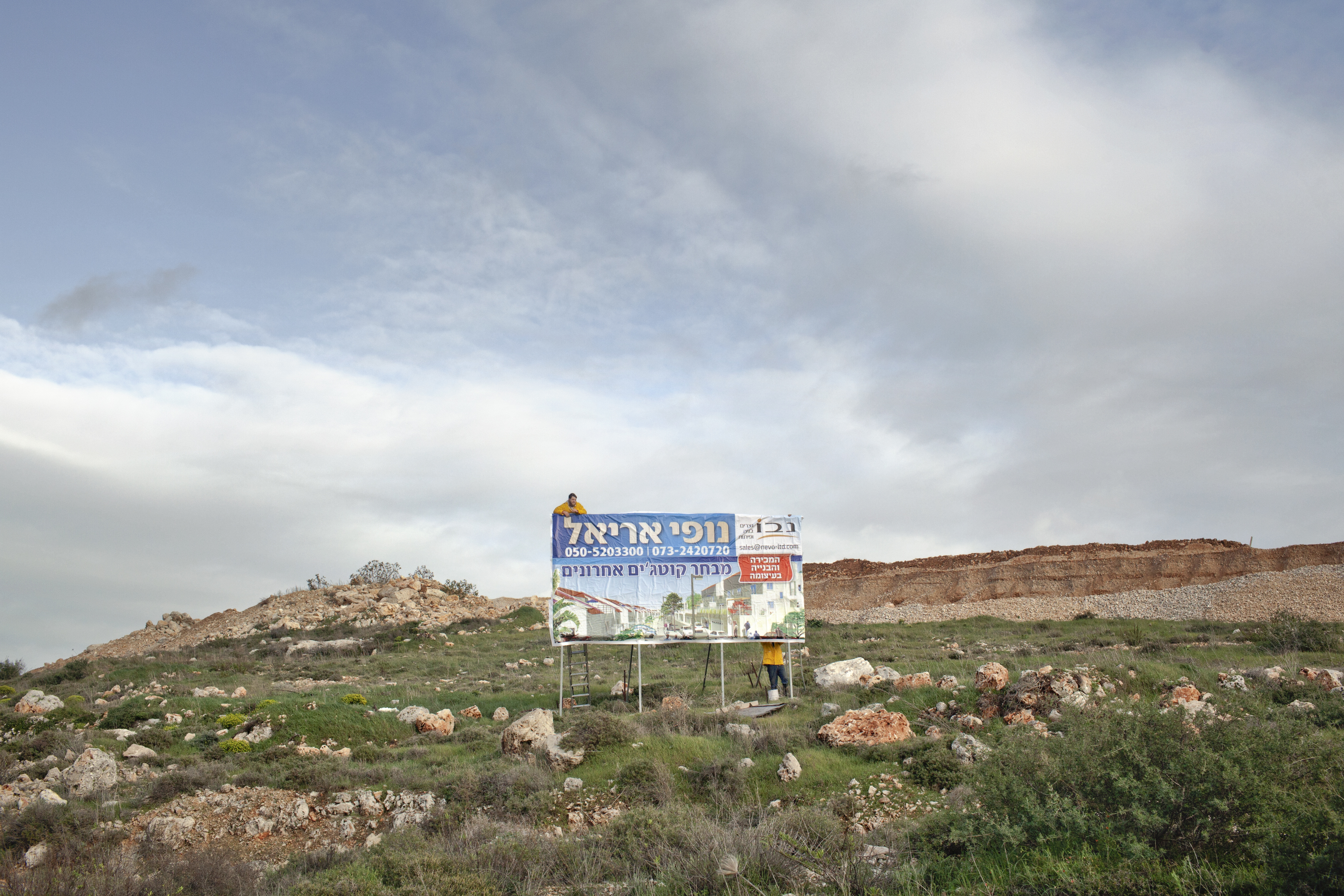
Advertising of new houses for sale near the Israeli settlement of Ariel. 06/02/2013.
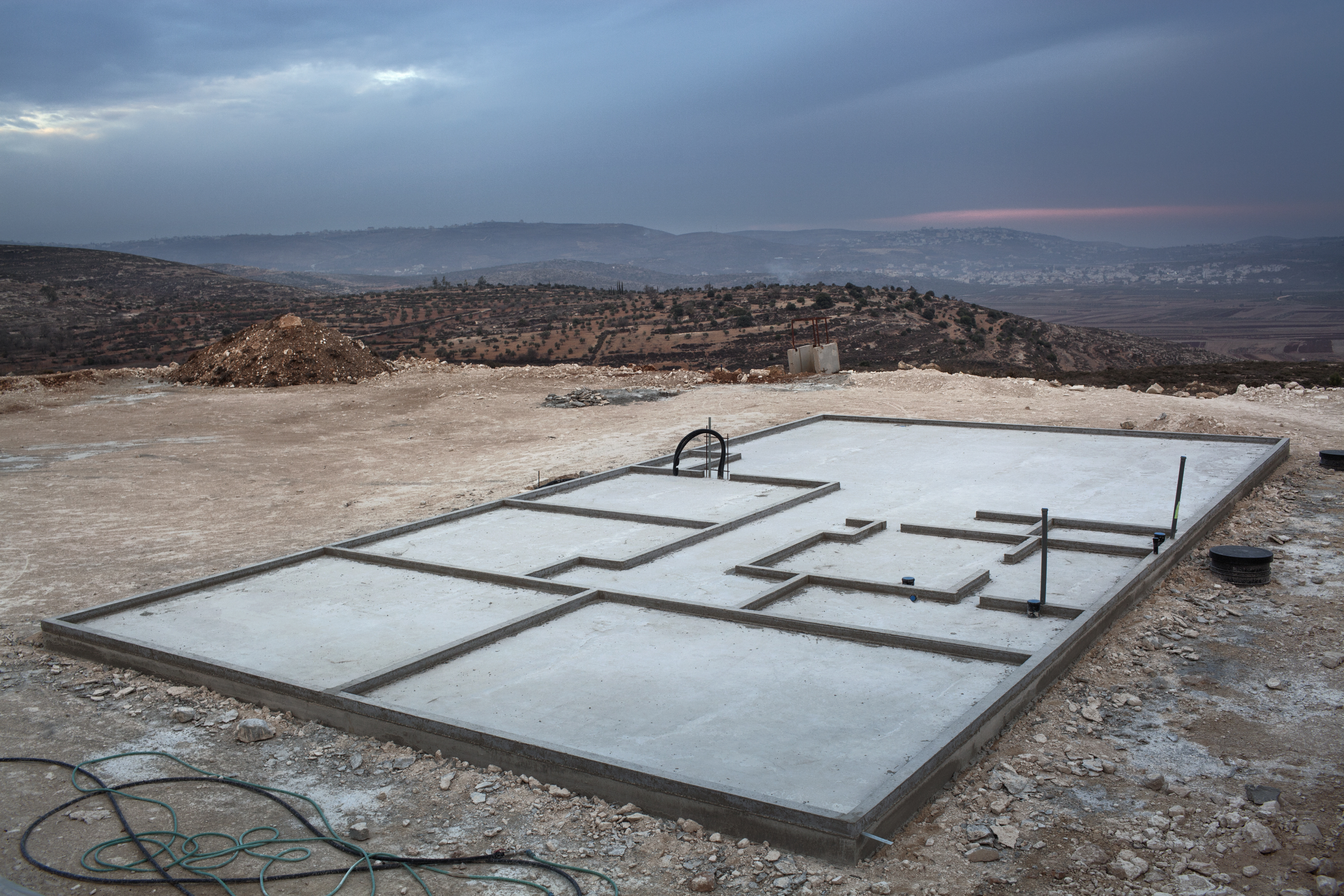
Outpost of Adei Ad, West Bank, 2013. The basis of a new Israeli house. Constructions never really stopped neither in the settlements nor in the illegal outposts, despite the requests of the international community and the Palestinians.
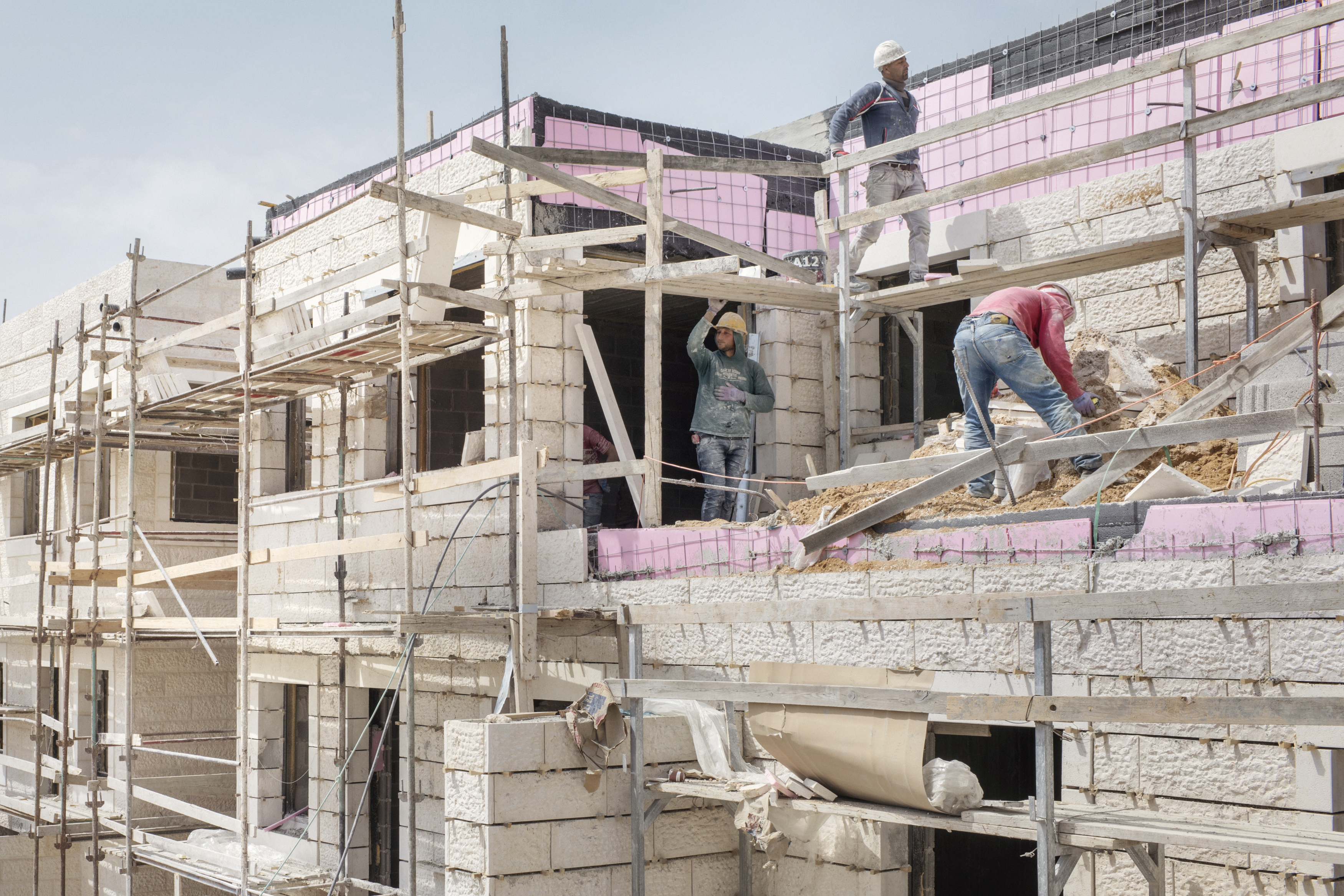
Gush Etzion settlement bloc, West Bank, March 2017. Palestinians at work for building new houses in the Israeli settlement of Efrat.
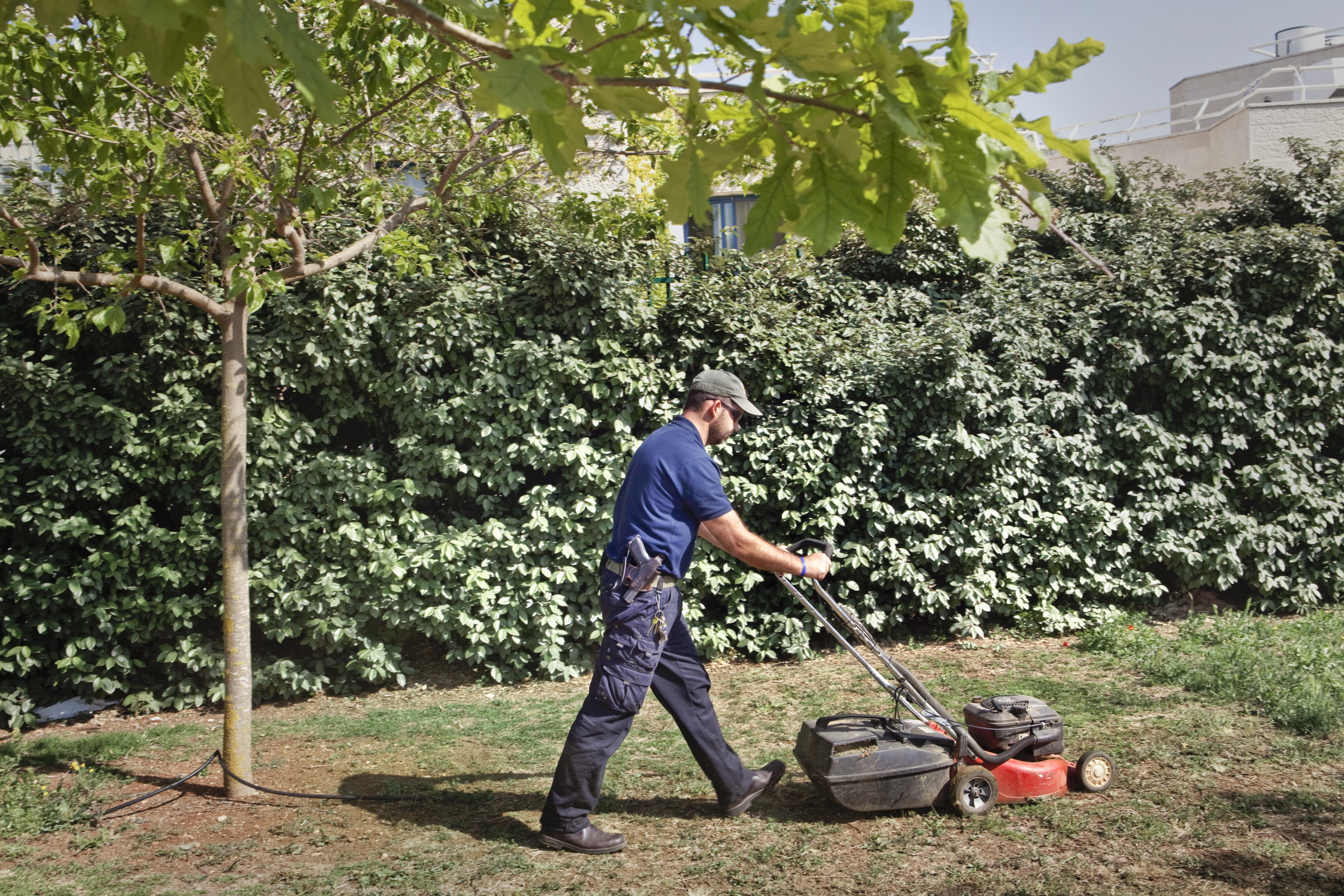
Settlement of Ofra, West Bank, 2013. Maintenance of lawns on the “Fallen Soldiers and Victims of Terrorism Remembrance Day”. The use of weapons is widespread in the settlements, even among civilians. There is always at least one security guard assigned to control who enters the settlements.
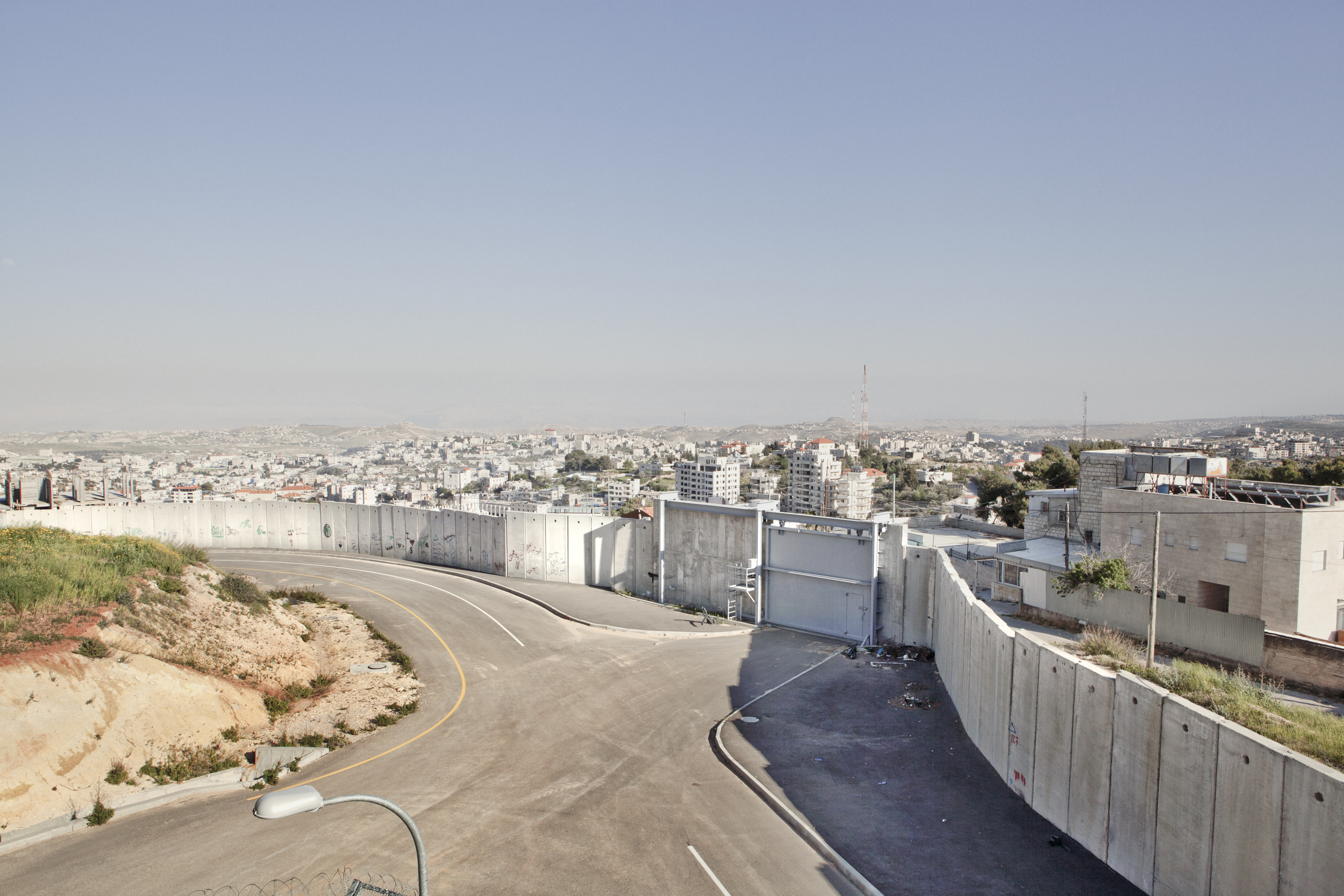
Settlement of Har Gilo, West Bank, 2013. Part of the separation wall that divides Israel and the West Bank, seen from the nearby settlement of Har Gilo. The wall, which is still under construction, is the subject of strong criticism, being well away from the 1949 Armistice Line and causing a real obstacle to freedom of movement for Palestinians. ### Colonia di Har Gilo, West Bank, 2013. Una parte del muro di separazione tra Israele e Cisgiordania vista dal settlement di Har Gilo. Il muro, ancora in costruzione, è oggetto di forte contestazione essendo ben lontano dalla linea dell’armistizio del ’49 e provocando un ostacolo concreto alla libertà di movimento dei palestinesi.
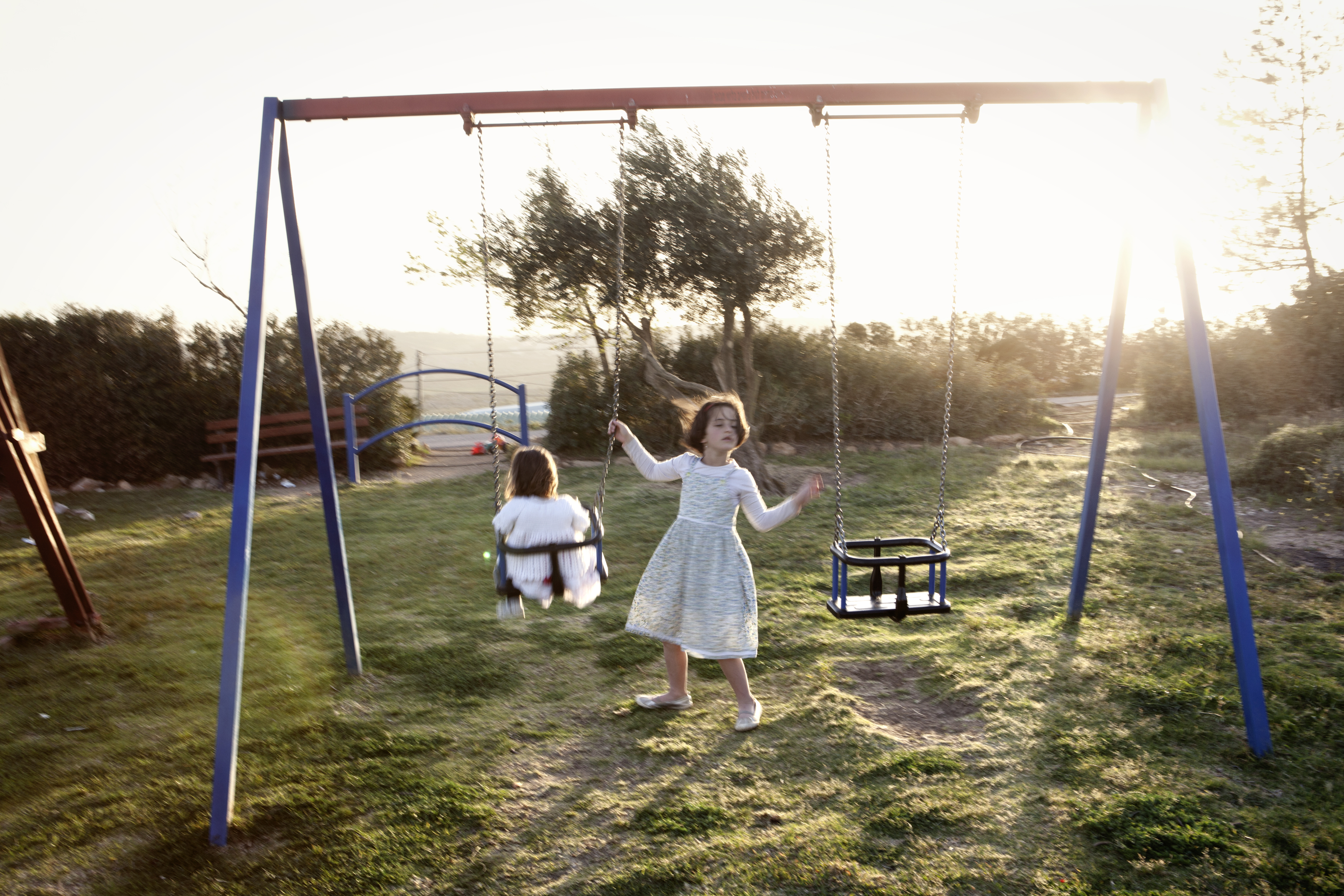
Outpost of Amona, West Bank, 2013. Two girls playing in the outpost of Amona. The outpost was established in 1995 on priavte Palestinian land and it was declared illegal under the Israeli law by the Israeli Supreme Court in 2006. Amona was partially dimantled in 2006. In 2014 the Israeli Supreme Court ordered to completely di- smantle the outpost within two years. Amona has been demolished on February 2, 2017, with two years of delay. ### Avamposto di Amona, Cisgiordania, 2013. Il parco giochi. L’avamposto è stato fondato nel 1995 su terra privata palestinese e fu dichiarato illegale dalla Corte Suprema secondo la legge israeliana nel 2006. Amona fu parzialmente smantellato nel 2006. Nel 2014 la Corte Suprema israeliana ordinò di smantellare completamente l’avamposto entro due anni. Il 2 febbraio 2017, con un ulteriore ritardo di due anni, tutte le case di Amona sono state demolite.
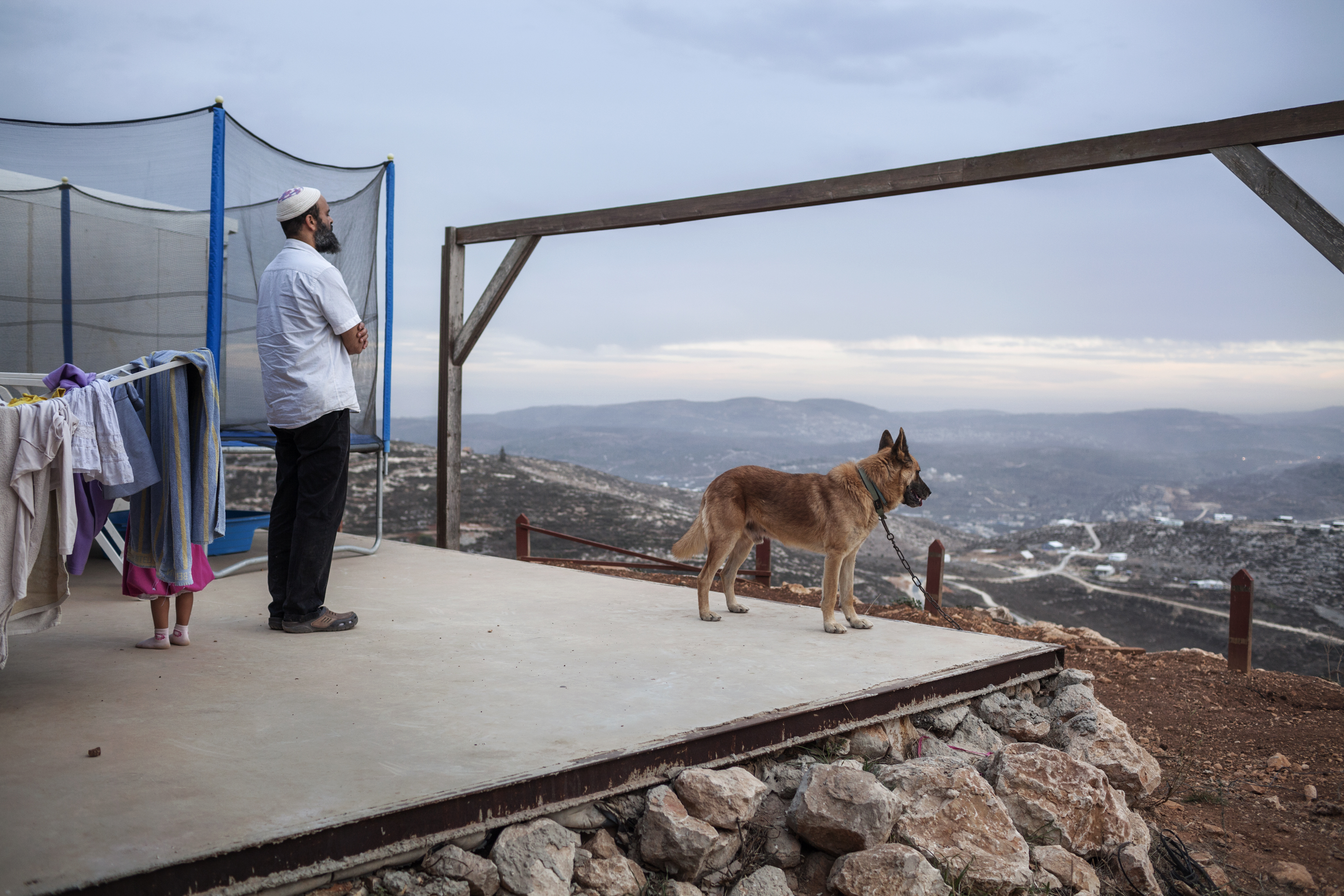
Israeli settlement of Ytzar, West Bank, 2013. A settler praying at the sunset. ### Colonia di Ytzar, Cisgiordania, 2013. Un colono prega al tramonto.
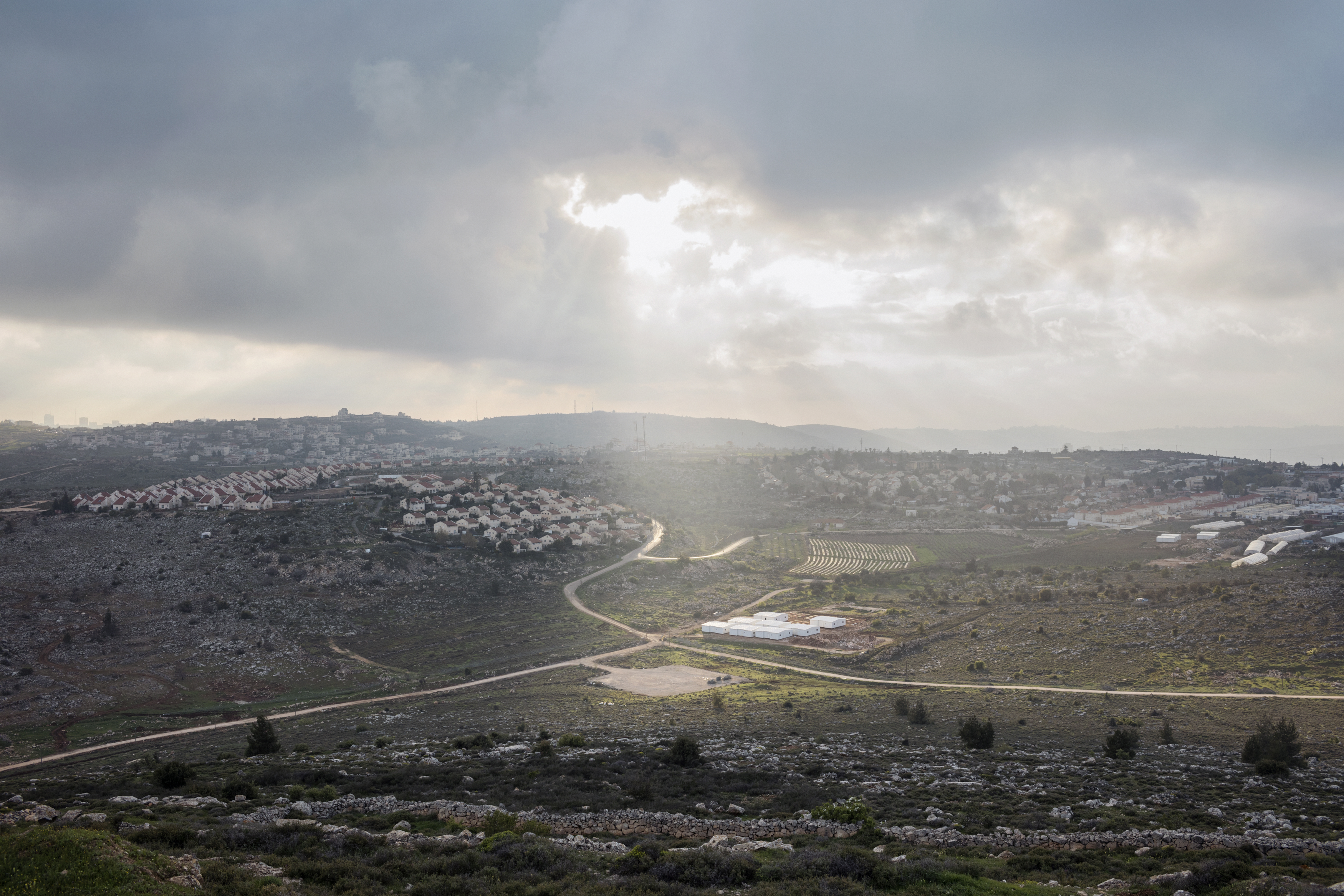
Israeli settlement of Ofra, West Bank, March 2017.
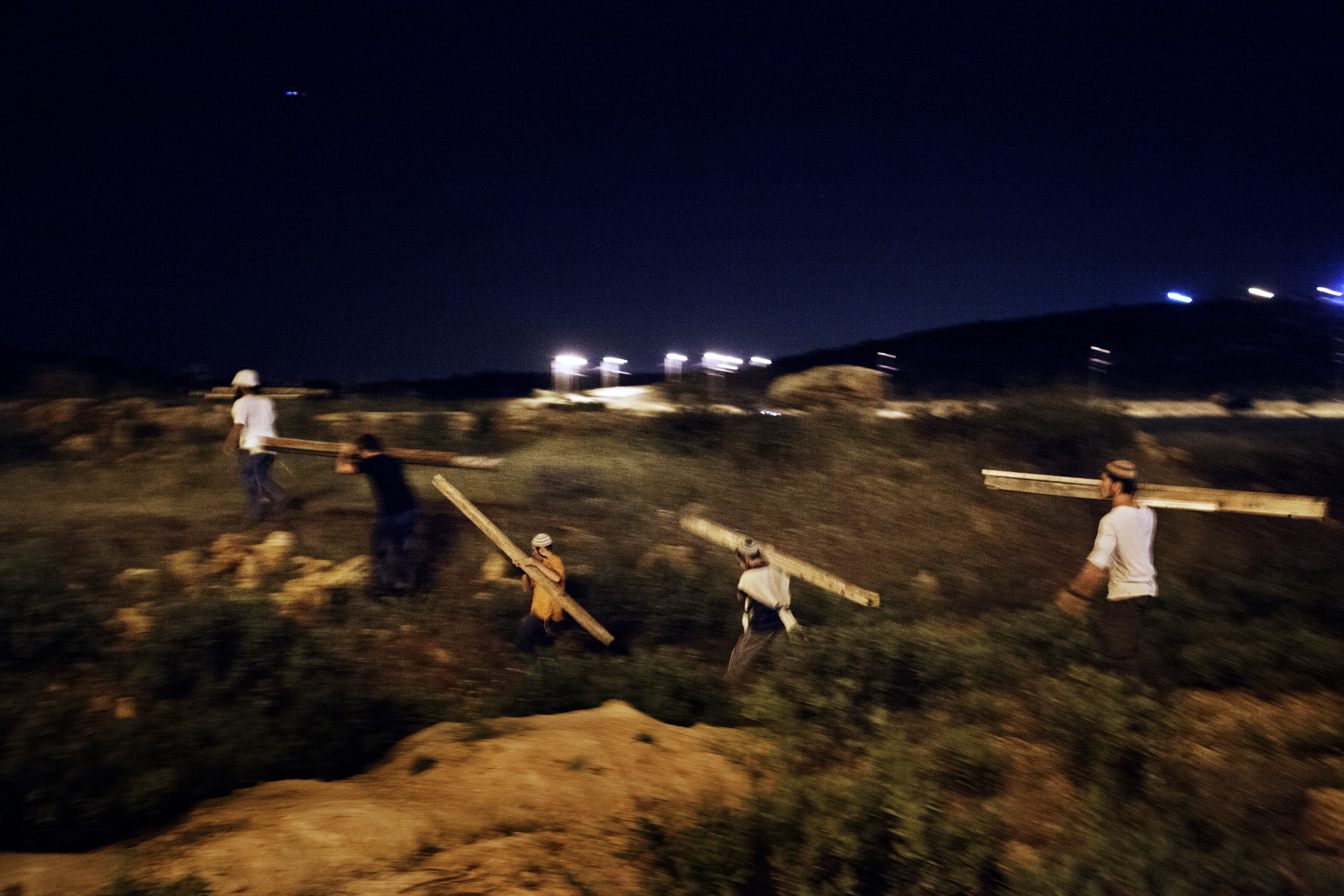
Tepuach Junction, south of Nablus, West Bank, 2013. A group of settlers carrying planks of wood to erect a tent as base for a new outpost on the site of the murder of Eviatar Borovsky, an Israeli settler stabbed to death the previous morning by a young Palestinian.
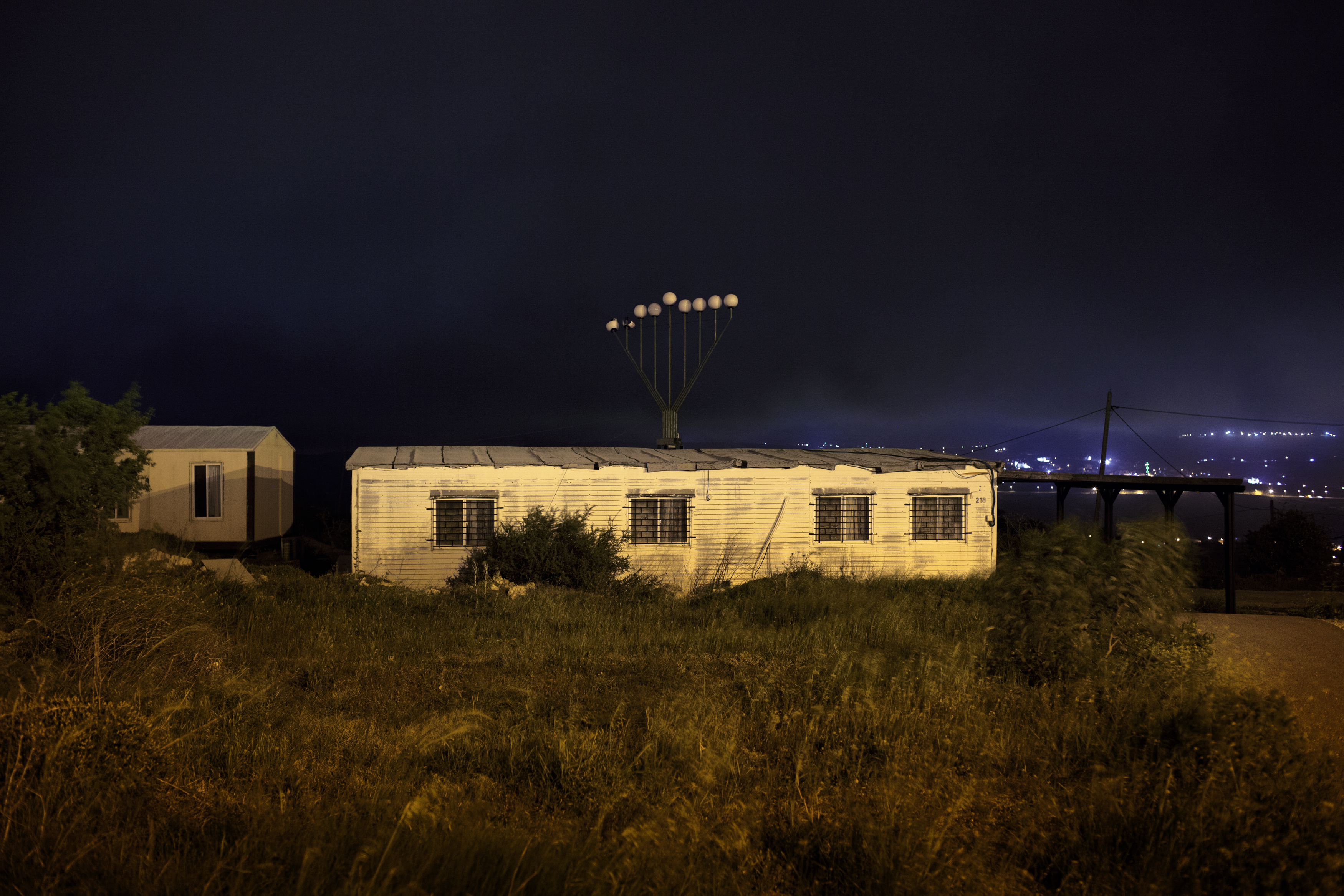
Outpost of Jabel Artis, West Bank, 2013. The synagogue. Jabel Artis is an outpost created by the expansion of the settlement of Bet El. All twenty of the prefabricated homes placed on the hill in 2001 lie entirely on private Palestinian land, next to what is considered the place of Jacob’s dream described in the Bible. The outpost is protected day and night by a sophisticated system of video surveillance.
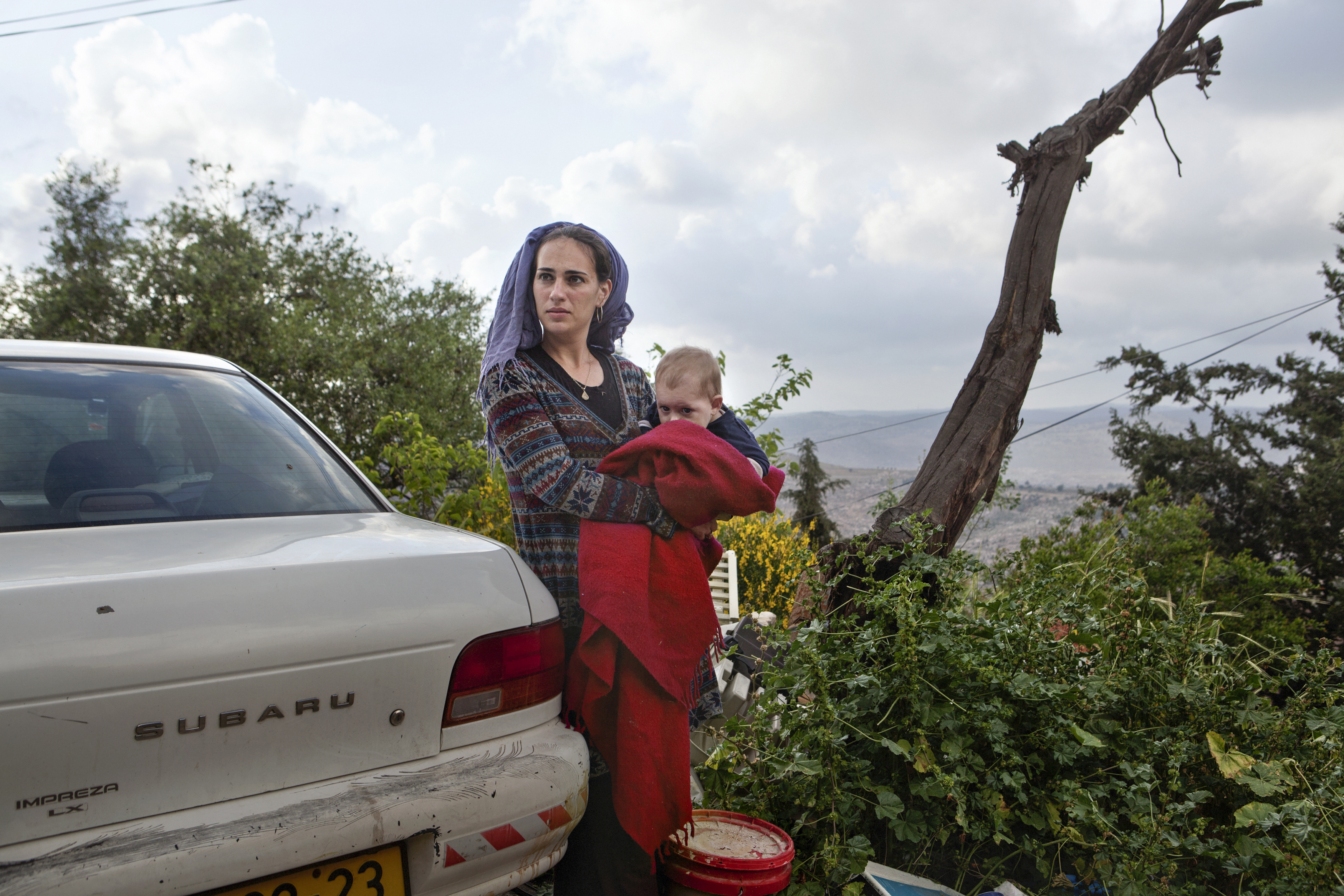
Settlement of Bat Ayin, West Bank, 2013. An Israeli settler from the Ukraine and her son outside their home in the settlement of Bat Ayin. Bat Ayin is located between Bethlehem and Hebron, and it was founded in 1989 by religious Zionists. The majority of its residents are practising Jews who support the Zionist efforts to build a Jewish state in the land of Israel.
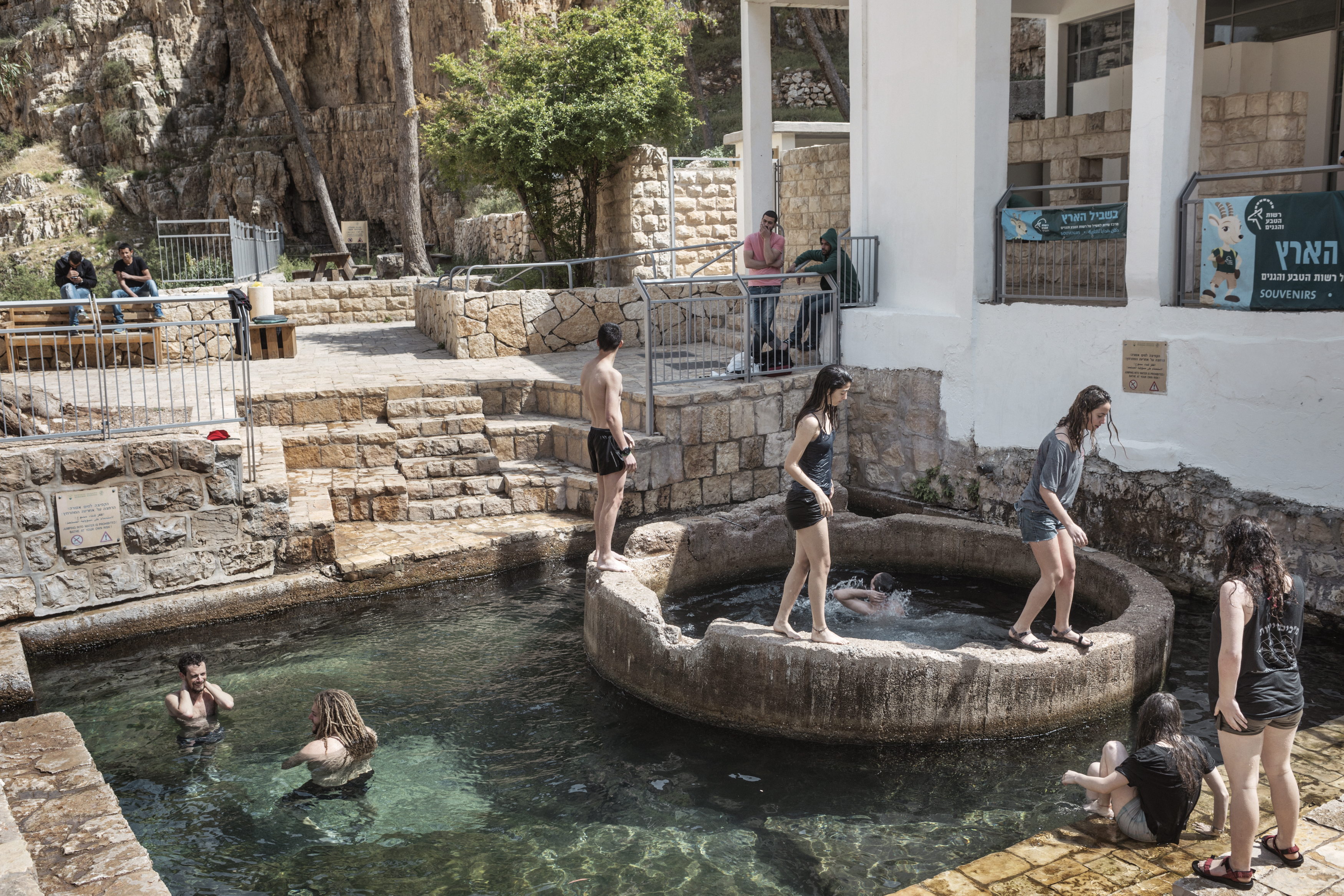
Wadi Qelt, West Bank, 2017. A group of young Israeli soldiers enjoy a day off at the spring. Wadi Qelt, which was declared Ein Prat Nature Reserve after Israel ocuupied the West Bank in 1967, is a favorite place for both Palestinians and Israeli hikers. Between the 1993 and 1995 the place was the site of different Palestinians attacks on Israeli setttlers following the Oslo Accords.
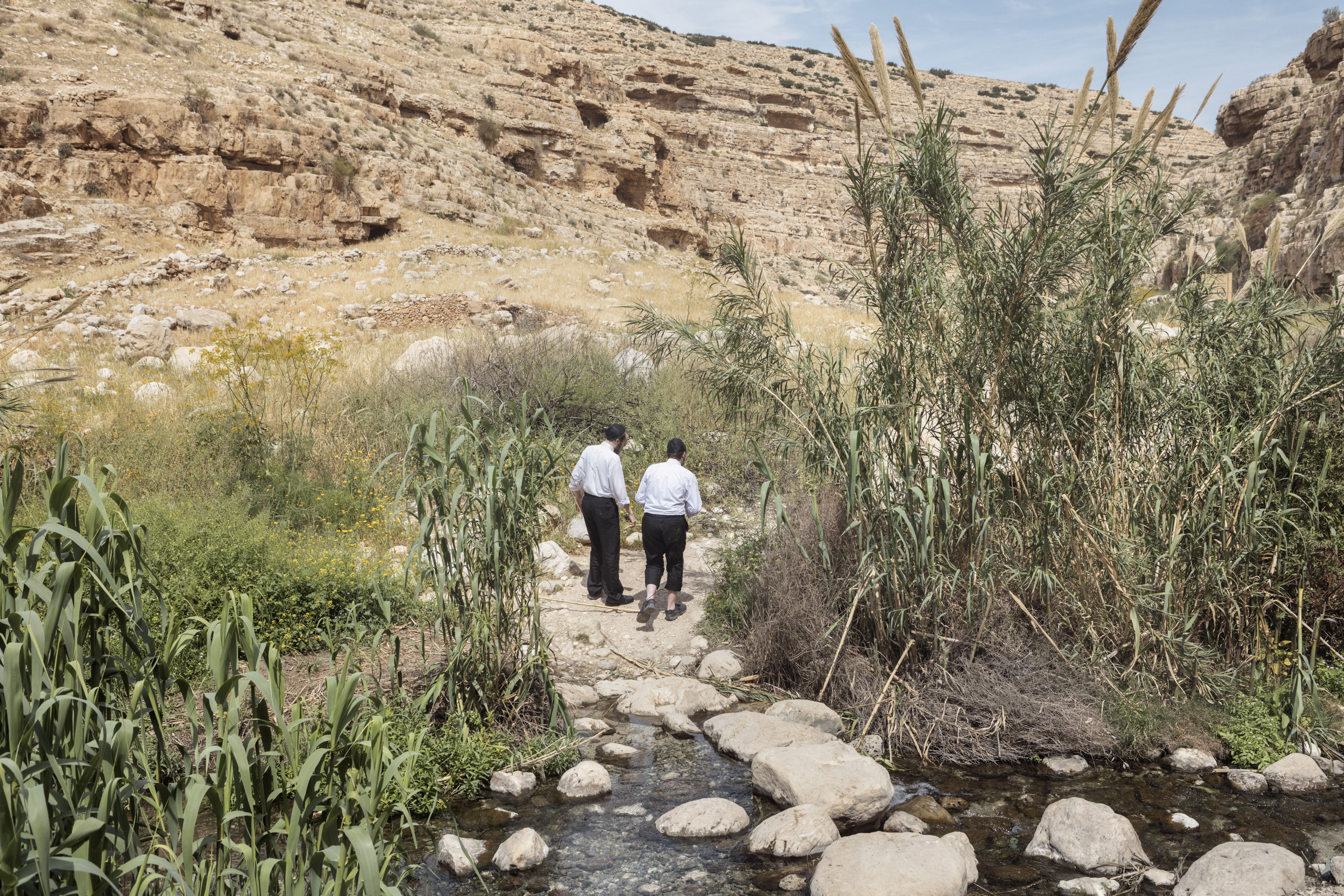
Wadi Qelt, West Bank, 2017. Ultra-Orthodox Jews having a walk in the Ein Prat Nature Reserve.
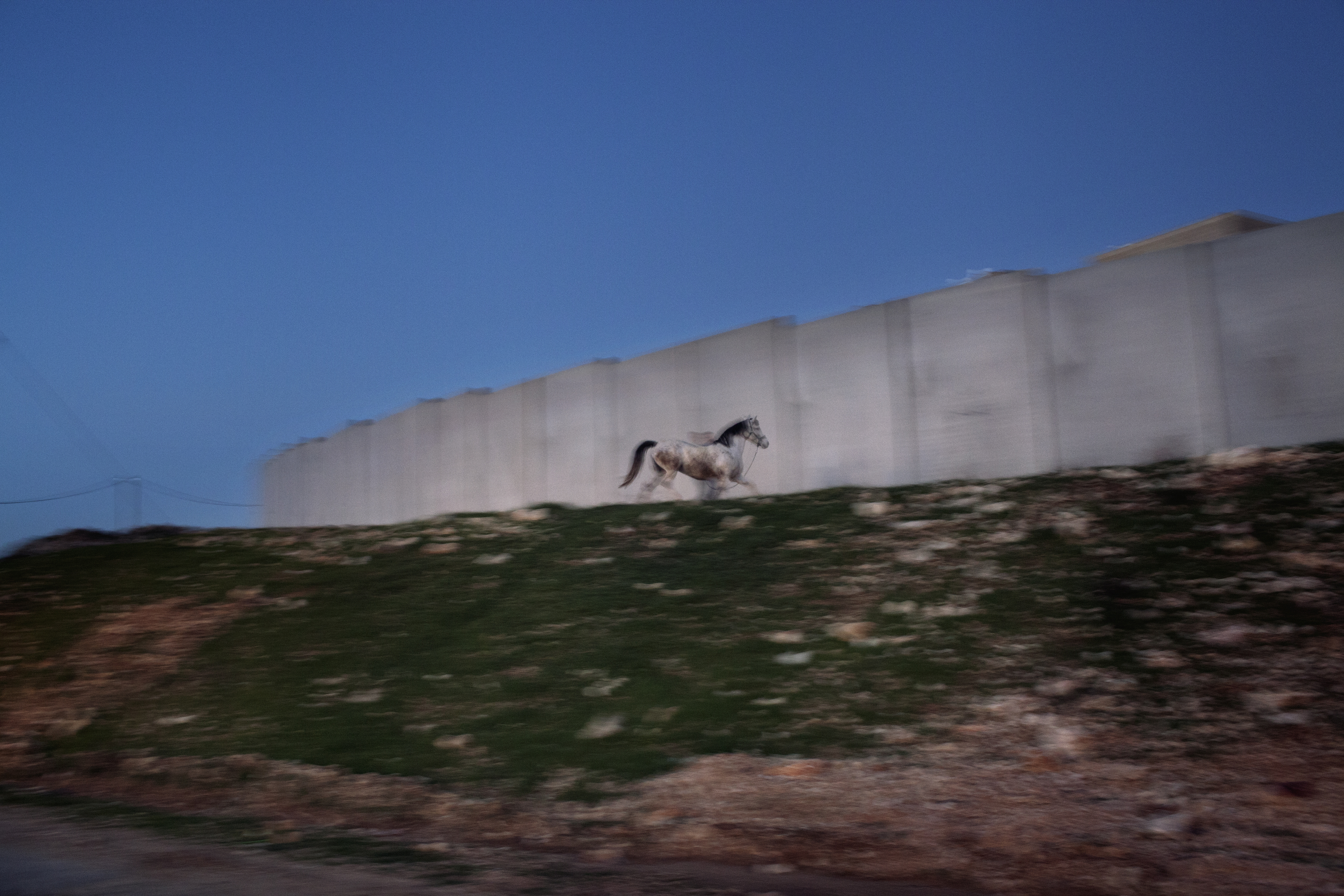
Settlement of Har Gilo, West Bank, 2013. A horse owned by a Palestinian family from the village of Al Walaja gallops outside the separation wall that divides the village from the nearby settlement of Har Gilo. The wall, which is still under construction, is the subject of strong criticism, being well away from the 1949 Armistice Line and creating a real obstacle to freedom of movement for Palestinians.
“Facts on the ground” is the expression used to characterize the Israeli colonial strategy in the Occupied Palestinian Territories which consists of creating conditions “on the ground” that would make the settlement process irreversible. Today, more than half a million Jewish settlers live beyond the “green line” in more than 100 official settlements and as many outposts which are not officially recognized but are effectively tolerated, if not subsidised, by the Israeli Government.
I went to Palestine for the first time in 2010 to document the consequences of the Israeli occupation on the Territories and on the Palestinian population. I returned a number of times and was able to observe a real “normalization” of the conflict, not in terms of a reduction in violence, but of an acceptance of its chronic nature. While in the Gaza Strip, the conflict continues to lead to situations of war in the most real sense, in the West Bank, the violence has assumed a less spectacular but therefore more insidious and more easily assimilated character. Checkpoints, forced detours and indiscriminate arrests are now part of a daily life of domination, not of a temporary precariousness of war.
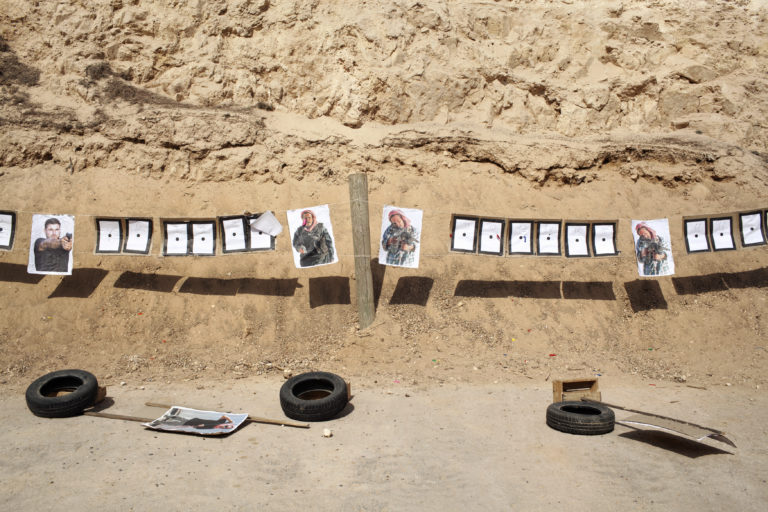
Images of Palestinians used as targets are seen in the shooting range of Caliber 3, an Academy for counter terror and security where professional security guard, as well as civilians and tourists come to train or to learn how to use a weapon. The academy is located at the Gush Etzion Industrial Park (near the settlement of Efrat), in the West Bank.
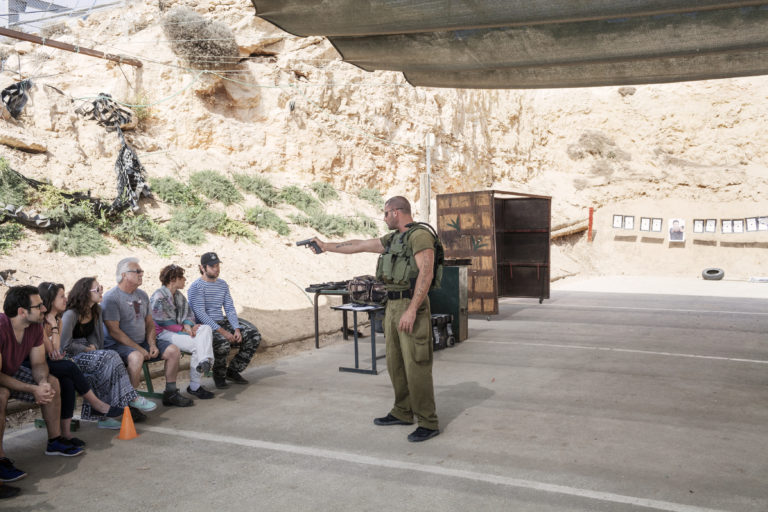
American tourists attending a course to learn shooting at Caliber 3, an Academy for counter terror and security where professional security guard, as well as civilians and tourists come to train or to learn how to use a weapon. The academy is located at the Gush Etzion Industrial Park (near the settlement of Efrat), in the West Bank.
Driven by the need to recount this everyday domination, I decided to base myself in the West Bank. For three years, I sought to explore the reality of the settlements from the inside, trying to cross the gates and defensive barriers in order to describe the life and landscape of these places. I travelled the West Bank from north to south, visiting many locations, from official settlements which really are small residential towns, to outposts consisting of just a few caravans or small prefabricated houses. I met settlers from the USA, Russia and the former Soviet Republics, from Europe, Ethiopia and Yemen. I noticed that only a small percentage of these settlers belong to ultra-nationalistic, violent and extremist fringes. On the contrary, most of them are part of a middle class in search of a house at an affordable price and the chance to live “in peace” far from the frenetic pace of the city. But can we look at these thousands of people without considering the context of ordinary violence inside which they can guarantee themselves a quiet life? Beyond the military exercises, the cameras and the electric fences, can we really imagine peace?
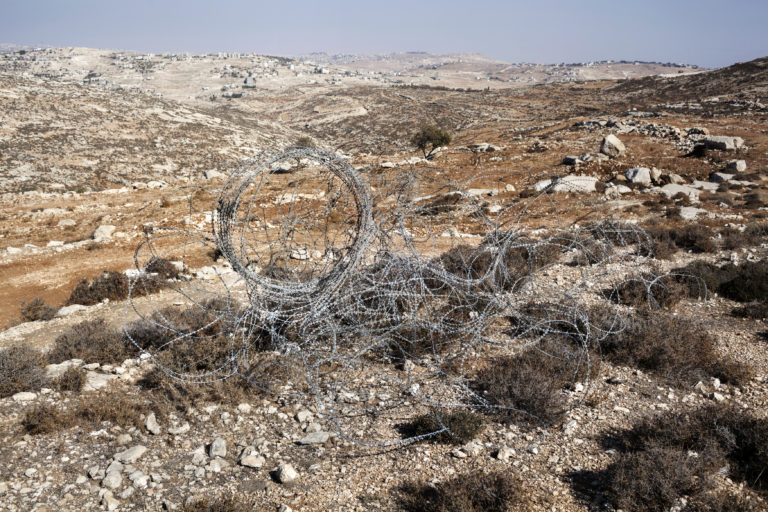
Israeli outpost of Giv’at Eitam, West Bank, 2013. Evidences of a new outpost which has been established on a hill close to the settlement of Efrata (South of Bethlehem). Settlers who took this plot of land declare that the plan is limited to the establishment of an agricultural farm, but most probably, according to the experts, the outpost is part of the expansion plan of the Efrata settlement.
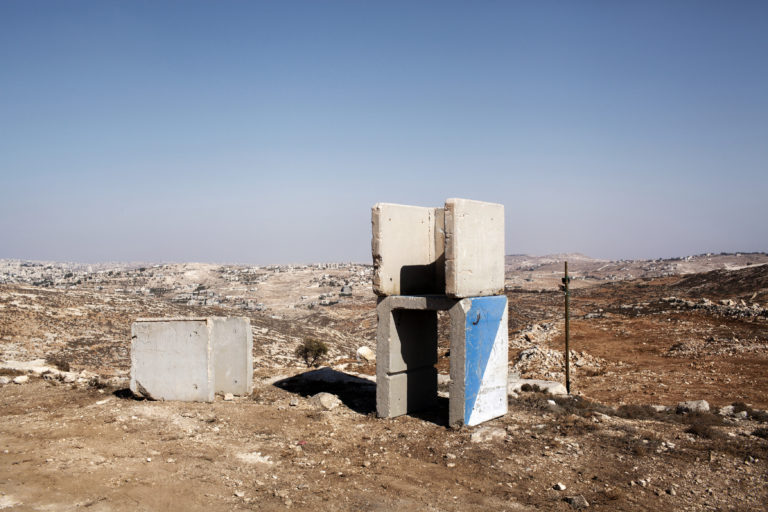
Israeli outpost of Giv’at Eitam, West Bank, 2013. Evidences of a new outpost which has been established on a hill close to the settlement of Efrata (South of Bethlehem). Settlers who took this plot of land declare that the plan is limited to the establishment of an agricultural farm, but most probably, according to the experts, the outpost is part of the expansion plan of the Efrata settlement.
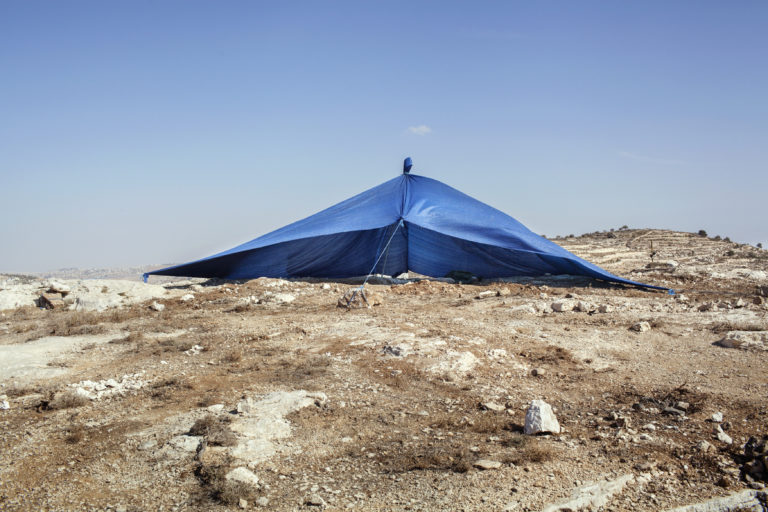
Israeli outpost of Giv’at Eitam, West Bank, 2013. Evidences of a new outpost which has been established on a hill close to the settlement of Efrata (South of Bethlehem). Settlers who took this plot of land declare that the plan is limited to the establishment of an agricultural farm, but most probably, according to the experts, the outpost is part of the expansion plan of the Efrata settlement.
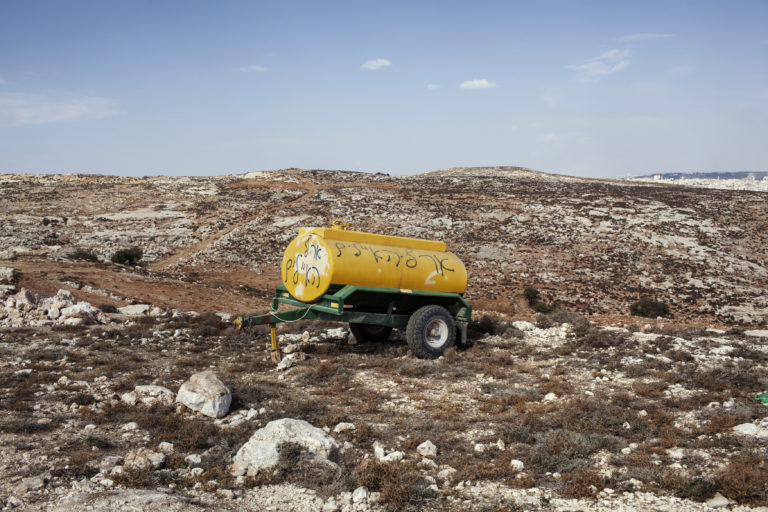
Israeli outpost of Giv’at Eitam, West Bank, 2013. Evidences of a new outpost which has been established on a hill close to the settlement of Efrata (South of Bethlehem). Settlers who took this plot of land declare that the plan is limited to the establishment of an agricultural farm, but most probably, according to the experts, the outpost is part of the expansion plan of the Efrata settlement.
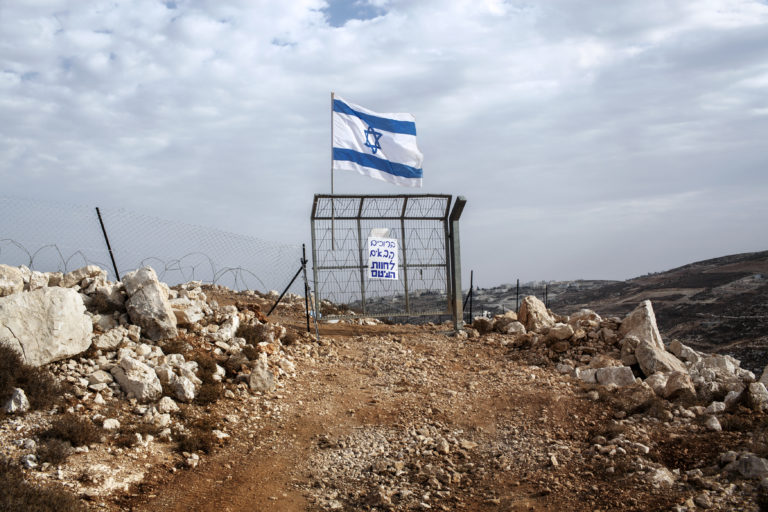
Israeli outpost of Giv’at Eitam, West Bank, 2013. Evidences of a new outpost which has been established on a hill close to the settlement of Efrata (South of Bethlehem). Settlers who took this plot of land declare that the plan is limited to the establishment of an agricultural farm, but most probably, according to the experts, the outpost is part of the expansion plan of the Efrata settlement.
